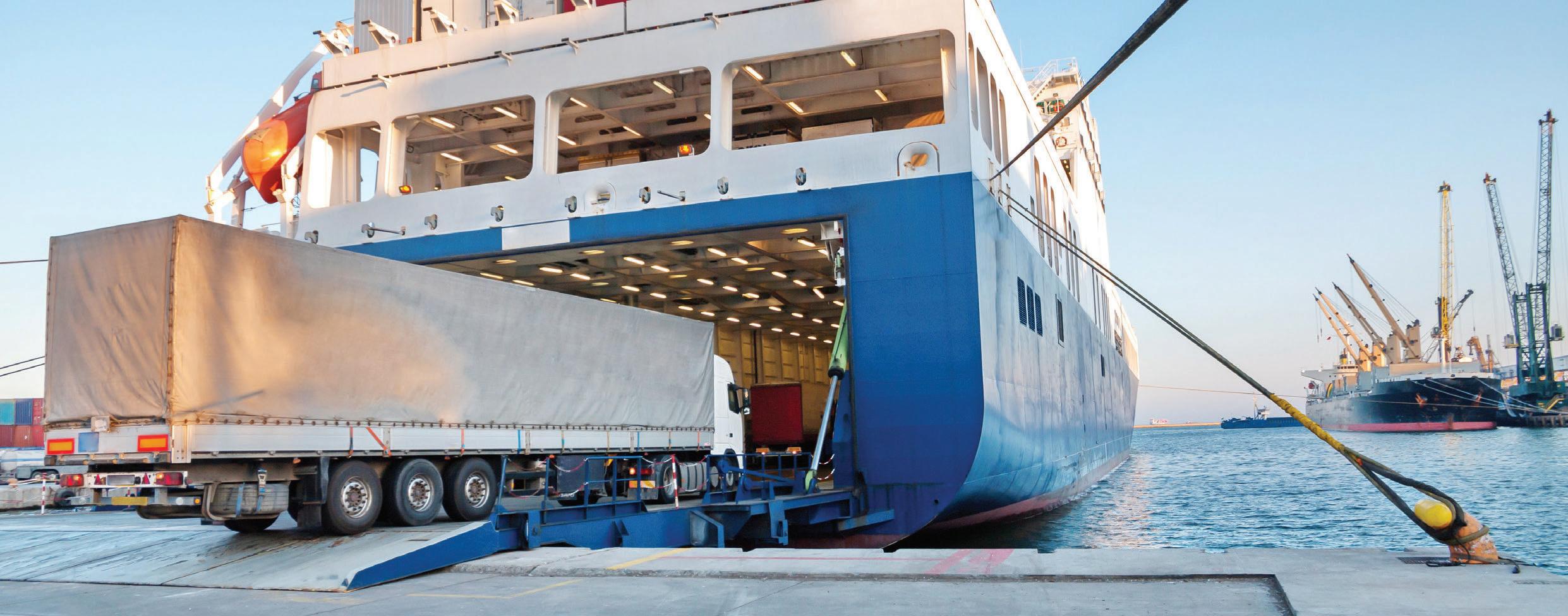








REGULARS 46 Global Briefing CO2 hub; emissions testing; solar park 49 Product News
Crane conversion, faster charging, recycling partnership 10 Congress Review

Gavin Lipsith on GreenPort Congress & Cruise 2022 12 Community Barcelona is opening up the port to the city 15 Finance
How Shoreham is financing its green growth 16 Community
Tallinn is working with its community 22 GreenPort

We chat to the inaugural host, Australia’s Port of Newcastle
The Methanol Institute talks income opportunities
A new partnership is working with aerial drones
ECOncrete talks about green construction

18 Cruise
Michele Witthaus chats to Cruise Liverpool 25 Australasia Focus
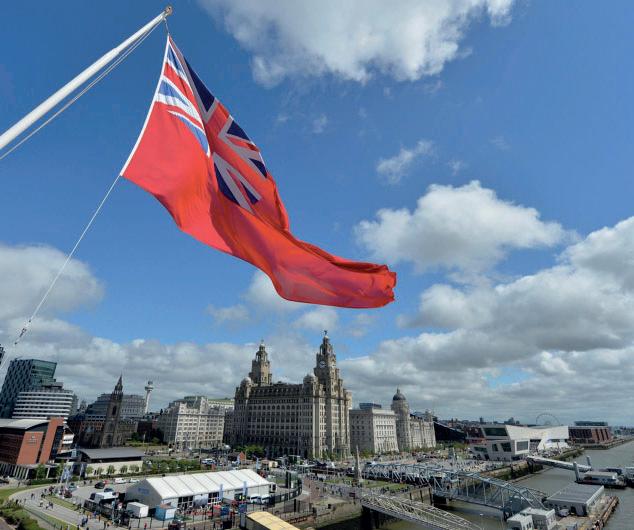
A NZ port is restoring local habitats, finds Dave MacIntyre 33 Africa focus
Shem Oirere looks at how a Cape Verde port is modernising 35 Opinion



Isabelle Ryckbost talks setting course for the new year 37 Future fuels
Alternative fuelled tugs and hydrogen truck conversion








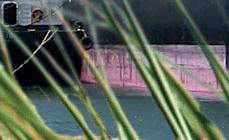
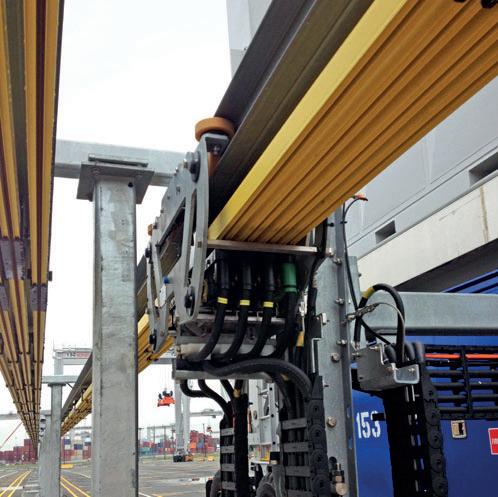
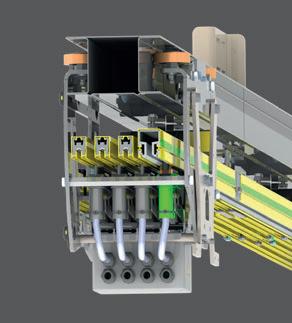





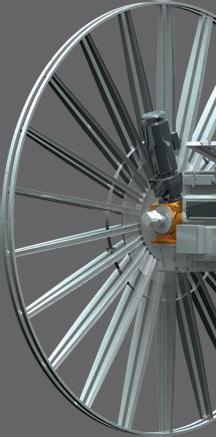





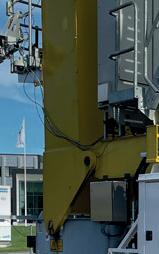



A very happy new year to all of our readers – we wish you all the very best for a happy and prosperous 2023.
With the dawning of a new year comes every reason to be optimistic despite the turbulent economic and political climate that will still find ourselves in.
Running through this issue is an overwhelming sense of how things run better and more efficiently when everyone works together to get the job done.
The 2022 GreenPort Congress hosted by the Port of Antwerp-Bruges is a great example of that.
Despite the doom and gloom that global inflation has put on operations and investment plans, the need to decarbonise both port activities and maritime trade is becoming increasingly urgent.
The event drove home that confronting these challenges through greater collaboration is key to overcoming this and exploiting new opportunities to do business.
You can read through a review of the event and its take homes in this issue. We look forward to seeing as many of you as possible at the next GreenPort Congress taking place at the Port of Newcastle, Australia, in February.
One thing that has become clear to me over the years of working in the industry is how terrible the ports sector is when it comes to sharing good news.
Well, we buck the trend in this issue and take a close look at two ports who are working on great projects working collaboratively with their communities to benefit the port, city and regional economy.
It’s a theme we’re going to be seeing much more of in 2023. The industry is finally beginning to realise that to survive and thrive in modern times, you need partnerships and several of them at that. This is especially true when it comes to achieving energy transition and meeting environmental objectives.
For example, the Port of Barcelona won the 2022 ESPO award for its huge community redevelopment project which has been 30 years in the making.
The port is undertaking no mean feat with its project to relocate its ferry and cruise terminals and open the port up to the city, all while getting ready to host the America’s Cup in 2024.
Tallinn meanwhile, has built a sustainable new cruise terminal at Old City Harbour providing a welcoming transition from ship to town and giving both residents and visitors a pleasant urban environment to be in.
There are plenty of take-home messages from both developments if your operation is eyeing doing something similar over the next few years.
In this issue, we continue the focus on alternative fuels, this time looking at the methanol offering.
As with other future fuels in the mix, opportunities are abound to lease port areas for sustainable methanol production and secure new income streams in the future. So be sure to swat up.
Exciting times lie ahead for all.
EDITORIAL & CONTENT
Editor: Anne-Marie Causer editor@greenport.com
News Reporter: Rebecca Strong rstrong@mercatormedia.com

Dave MacIntyre, Australia Shem Oirere, Africa Michele Witthaus, Cruise
Gregory Dolan, The Methanol Institute
Valdo Kalm, Port of Tallinn
Gavin Lipsith
Dr Chris Wooldridge, Cardiff University Dr Ido Sella, ECOncrete
Jordi Torrent, Port of Barcelona Dr Chris Wooldridge, Cardiff University
Production
David Blake, Paul Dunnington production@mercatormedia.com
SALES & MARKETING
t +44 1329 825335 f +44 1329 550192
Media Sales Manager: Arrate Landera alandera@greenport.com
Chief Executive: Andrew Webster awebster@mercatormedia.com
Published quarterly by Mercator Media Ltd, Spinnaker House, Waterside Gardens, Fareham, Hampshire PO16 8SD
Tel: +44 1329 825335 Fax: +44 1329 550192

E-mail: sales@greenport.com Website: www.greenport.com
Registered in England Company Number 2427909
Registered office address: c/o Spinnaker House, Waterside Gardens, Fareham, Hampshire PO16 8SD
Subscriptions@mercatormedia.com Register and subscribe at www.portstrategy.com 1 year’s digital subscription with online access £166.00
For Memberships and Corporate/multi-user subscriptions: corporatesubs@mercatormedia.com
©Mercator Media Limited 2023 ISSN: 2045-6085 (print) ISSN: 2633-4488 (online)
Cover image: Pile protection at Brooklyn Bridge Park Credit: ECOncrete
Running through this issue is an overwhelming sense of how things run better and more efficiently when everyone works together to get the job done
‘‘
Air Liquide, Fluxys Belgium and Port of Antwerp-Bruges have been awarded EU funding to build the Antwerp@C CO2 Export Hub.
The €144.6 million in funding under the Connecting Europe Facility for Energy (CEF-E) funding program will help create the innovative project which is among the first and largest multimodal open access CO2 export facilities in the world.
“Port of Antwerp-Bruges has been committed from the very start in the Antwerp@C project in order to reduce the CO2 emissions on the Antwerp port platform by 50% in 2030,” said Jacques Vandermeiren, CEO of Port of Antwerp-Bruges.
”As a port authority we must continue to fully assume our role as community builder in order to achieve a climate impact that reaches far beyond the boundaries of the port platform.”
The Antwerp@C CO2 Export Hub project involves creating an open-access infrastructure to transport, liquefy and load CO2 onto ships for onward permanent offshore storage.
CO2 captured on industrial players sites on the Antwerp port platform will be collected and transported via an intra-port open-access pipeline network. A shared liquefaction and export terminal will be built, including a CO2 liquefaction unit, buffer storages and marine loading facilities for cross-border shipping.
As part of the project, Air
A port in California has received US$10.4 million in government funding to help build shoreside power plug-in infrastructure. The Ventura County Transportation Commission awarded the Port of Hueneme the grant for its North Terminal Shore Power Project. The port has also recently received state and federal funding to help increase electrification efforts, track air quality progress and further reduce particulate matter.
Liquide
Canada’s largest port is testing a variety of low and zero-emission fuels and technologies in order to create a zero-emission port by 2050.
The move by the Vancouver Fraser Port Authority, together with partners from across the port community, is part of the port authority’s efforts to phase out all port-related emissions in support of the Government of Canada’s goal to achieve net-zero emissions by 2050.
“Charting our course towards a zero-emission port starts with collaborative efforts like these, between the port authority, the port community, and government, to test innovative new low-emission fuels and technologies that reduce emissions while keeping trade moving through the Port of Vancouver,” said Robin Silvester, president and chief executive
Procedures have been overhauled in a critical link between Europe’s rail freight and shortsea networks in Rotterdam, resulting in more than 98% of containers meeting their slots. Around 70,000 cargo units are passed from Rail Service Center Rotterdam (RSC) to Rotterdam Shortsea Terminals (RST) each year. In a project initiated by two terminal companies and supported by Samskip, work began in May 2022 to eliminate inefficiencies.
terminal. The joint venture will benefit from Air Liquide’s expertise in CO2 liquefaction and handling and from Fluxys’
Port of Antwerp-Bruges
experience in terminalling activities. Air Liquide will provide its proprietary technology for the CO2 liquefaction plant, which will be a first of a kind in its scale and design.
Port of Antwerp-Bruges reserved a plot of land for the terminal on a strategic location inside the port, and will build new quay infrastructures for the mooring of CO2 ships.

The Antwerp@C CO2 Export Hub will have an initial export capacity of 2.5 million tonnes per annum (Mtpa), with the ambition to reach up to 10 Mtpa by 2030. It will pave the way for future CCS initiatives in the region by providing scalable and modular infrastructures accessible to all industrial players.
officer of the Vancouver Fraser Port Authority.
“We plan to continue taking tangible steps, in close collaboration with our partners across the port, towards our goal of phasing out all port-related emissions by 2050.”
Joint initiative Through the Low-Emission Technology Initiative, a joint initiative between the port authority and the Province of British Columbia, the port authority and the province have each committed CAN$1.5 million in funding to support the port community’s transition to low-emission energy, including the testing of battery-electricpowered terminal tractors; 100% biodiesel on commercial ferries; a hydrogen-powered crane; and
Decarbonising the world’s busiest maritime corridor will deliver a seismic boost to the UK’s green shipping ambitions that include the US, Norway and the Netherlands. These were the words of Christian Pryce, chief commercial officer of the Port of Dover, speaking at COP27 on a panel of governmental and industry maritime experts. “It is encouraging to see progress being made and we are determined to deliver even more.”
100% renewable diesel on a terminal locomotive and one of the port authority’s patrol boats.
Efforts to test low-emission fuels include a six month trial of 100% renewable diesel on one of the port authority’s patrol boats, the Takaya, making the port authority the first federal agency in Canada to run a vessel on 100% renewable diesel.
Renewable diesel is a non-fossil fuel energy source derived from a range of organic sources such as vegetable oils, animal fats and food waste. The port authority said that using renewable diesel can result in up to 80% less net greenhouse gas emissions than regular diesel on a life-cycle basis.
Shell Canada, a partner on this project, supplied the renewable diesel and provided significant technical expertise to the project.
An EU funded project is developing a standard digital language between port equipment and container terminal operations systems. The iTerminals4.0 project, which is co-financed by the Connecting Europe Facility Programme (CEF), has been successfully implemented in the terminals operated by the CMA CGMTerminal Link group in Malta, Thessaloniki, Dunkerque and Montoir and by the PSA terminals in Antwerp, Sines and Genoa.
The Port Authority of Valencia (PAV) has awarded the PAVASALPAVENER joint venture the contract for the installation and maintenance of its first solar energy plant.
The contract worth just over €3 million, will see the park be built over a surface area of 6,420 square metres at the Príncipe Felipe dock in the Port of Valencia.
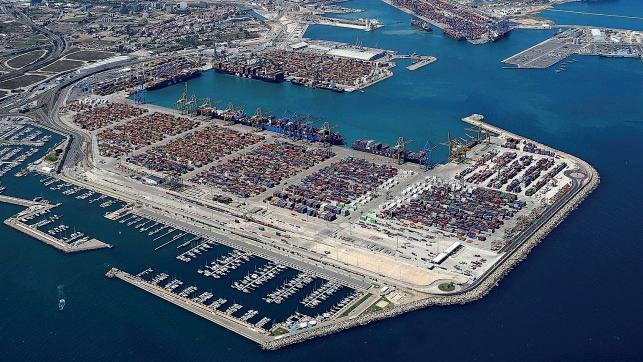
When completed, the solar park will generate 2,353 MWh/ year, that is, 3% of the electrical energy consumed by the port.
This is the first of the photovoltaic plants being developed in the Valencian precinct which will enable progress to be made in the self-supply of green energy to the Port of Valencia.
This project is financed by the Next Generation funds of the European Union and the Spanish Government’s Recovery, Transformation and Resilience Plan.
Meanwhile, PAV has also put another solar park out to tender for the roof of the Valencia Terminal Europa vehicle warehouse which will involve an investment of €17 million.
The port authority is currently in the process of evaluating the
bids. Between the two sites, 14% of the electrical energy required by the port could be produced upon completion.
PAV is also studying the site for the location of a third plant in the Port of Valencia.
Electromur S.A. has already been awarded the contract for the installation and maintenance of the solar energy plant to be installed shed 4 of the Port of Gandia.
It’s hoped that together, the solar parks will contribute to the strategic objective designed by the PAV to be an emission neutral port by 2030, twenty years ahead of the objectives set by the European Green Pact.
Wabtec Corporation has signed up to a project to develop a megawatt-charging standard and infrastructure for ferries calling at ports across Europe.
The HYPOBATT (hyper powered vessel battery charging system) project is part of the EU-wide Horizon initiative aimed at advancing electrification in the marine industry.
“Europe has aggressive sustainability targets to reduce CO2 emissions by at least 40% until 2030,” said Olivier Kompaore, vice president for Industry Product Line at Wabtec.
“This project will help to standardise a modular, fast, and easy multi-megawatt charging system, paving the way for clean, zero-emission and competitive solutions for maritime transportation. Wabtec’s state-of-the-art charging solutions, like
The port authority is earmarking €130 million in sustainability costs to comply with the strategic objective of Valenciaport 2030 zero emissions in order to reduce dependence on fossil fuels and favour energy autonomy.
In addition to these solar projects, there are other initiatives such as the location of wind turbines in the Port of Valencia, the construction of two electrical substations to provide shore power to ships docking at the Valencian precinct and the use of hydrogen in port activities.
FerryCHARGER, will serve as the blueprint for the project.”
Wabtec is working in a consortium with 18 partners who are responsible for a 42-month project to identify charging solutions that reduce contact time, wait time and maintenance cost.
The project also will develop a fully automatic electric ship connection system with the capacity to fully charge a vessel’s battery while at the dock.
The consortium aims to reduce connection time to less than 30 seconds, charging time by 10%, and space dock side for the system by 20% as well as improving charger availability by 95% and battery life by 10%.
The technology will be demonstrated at the ports of Norddeich and Norderney in Germany using a vessel owned by the Reederei Norden-Frisia shipping company.
Intermodal train benefits A new railway link will connect Stockholm Norvik to a larger railway network, offering customers more sustainable and costeffective transport solutions. Train service operator, TX Logistik, will introduce the new train service in January 2023, with five departures each week between Stockholm Norvik Port and the Eskilstuna Intermodal Terminal.
Bulk terminal decarbonisation Stolthaven Terminals has partnered with Deloitte to test an innovative interactive tool to support its journey towards carbon neutral. The bulk liquid and gas storage provider said that insights provided by Deloitte’s decarbonisation tool, a science-based AI solution, has generated an ‘emissions reduction roadmap’ with a list of priorities including electrification, insulation and reducing waste and leaks.
A series of ‘Smartdocks’ is being installed along the River Thames in London in a bid to reduce its carbon emissions by 80%. The Smartdocks are being installed between Westminster and Dartford by Net Zero Marine Services (NZMS), providing emissionsfree charging and other services to power six million passenger trips and move four million tonnes of cargo per year by 2030.
“Our projects will deliver first-of-a-kind shore power infrastructure on a tidal river for commercial applications,” said NZMS director, Miles Cole.
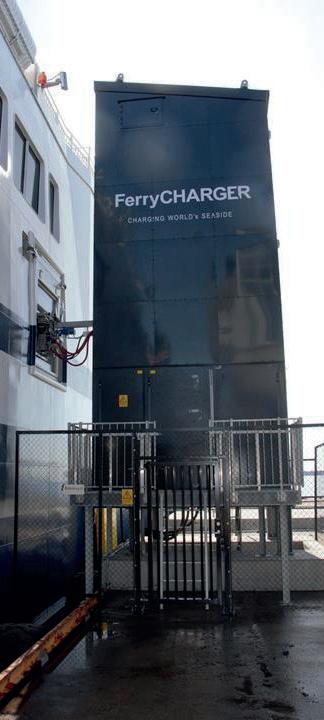
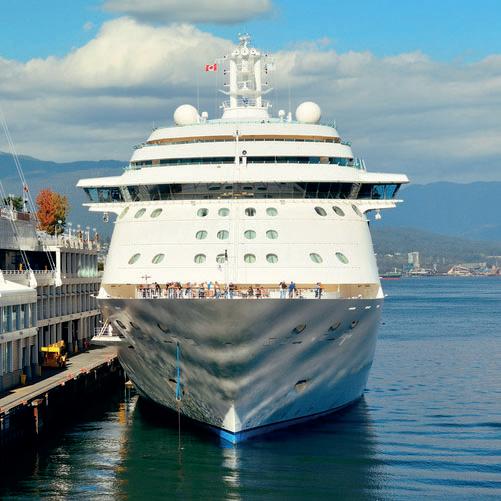


SSA Marine has completed a multi-year project to convert nine ZPMC diesel-electric 1,000 hp RTGs to 100% grid-tied electric.
This multi-year conversion project has resulted in the largest deployment of eRTGs in North America and represents 100% of the RTG fleet at the Port of Long Beach Pier J terminal.

“SSA is thankful for the opportunity to partner with the Port of Long Beach and the California Energy Commission to complete this project,” said Scott Hainlen, superintendent at SSA Terminals.”
The multi-million-dollar
Cavotec has launched an ultra-fast Megawatt Charging System for battery-powered vehicles and ships.
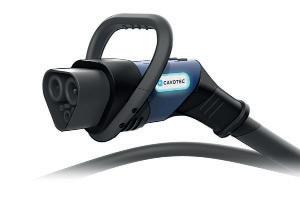
In what it calls a major breakthrough in industrial e-vehicle and e-vessel charging, global engineering group Cavotec has launched its ultra-fast Megawatt Charging System (MCS).
“MCS enables the safe and quick connection of heavy-duty vehicles and ships to electrical power in a reliable, ergonomic unit. As the most powerful system on the market, MCS significantly reduces typical charging times, thereby minimising downtime,” said Jörn Bullert, vice president product management, charging solutions, Cavotec.
The system provides up to 3MW/hr of power from a single
project was supported by a US$9.7 million grant from the California Energy Commission. Project partners include Port of Long Beach, Southern California Edison, Cavotec and the California Energy Commission.
The Pier J eRTG project is estimated to eliminate consumption of diesel fuel by 225,000 gallons per year, reducing emissions of criteria air pollutants and greenhouse gases from SSA Marine’s operations.
“SSA Marine has long been a leader in the testing and deployment of technologies to reduce emissions from maritime
operations. The completion of the Pier J eRTG project is another great example of this innovative spirit and commitment to the environment,” said Ed DeNike, president of SSA Containers.
SSA Marine is one of the world’s largest independent, privately held marine terminal operators, with activities at more than 250 terminal facilities and rail operations throughout the US, Canada, South America, Asia, New Zealand and South Africa.
The system consists of a high-power electronic module, an MCS connector and an MCS inlet as a mating device located on the vehicle. It can operate at three different power levels (350kW, 1MW, 3MW).
Noatum Terminals has acquired two fully electric automobiles, completing its on-site fleet at its Castellon terminal in Spain. The new Dacia Spring Comfort Plus Electrics will replace existing diesel vehicles, joining the two hybrids the terminal acquired three years ago. Infrastructure has been upgraded with the installation of two 7kW charging stations. The move to electrification is guided by Noatum’s Environmental Policy which defines the company’s environmental objectives and corporate actions needed to achieve sustainability.
Trelleborg Marine has delivered marine fender systems, docking and mooring equipment to PetroVietnam Gas’ Thi Vai LNG Terminal in Vietnam. As part of the agreement, Trelleborg will provide four sets of its latest generation Super Cone Fenders (SCN), to optimise performance and efficiency. The conical body shape makes the SCN very stable even at large compression angles and provides excellent shear strength and resistance to over compression.
connector, providing a turnkey DC charging solution with grid-to-inlet functionality that supports the decarbonisation of industrial vehicles and ships.
Because it’s an advanced power management system that incorporates user dashboards and controls, it can significantly reduce charging time and maximises uptime compared to existing
It also has an active connector and cable cooling system (included in 1MW and 3MW chargers) and vehicle inlet (included in the 3MW charger).
Cavotec’s MCS has been designed for use with all kinds of heavy-duty vehicles used in a variety of sectors, including agriculture, construction, mining and with e-vessels such as ferries.
The MCS system will be officially launched on 24 October at Bauma, the global construction machinery trade fair.
Khalifa Economic Zones Abu Dhabi (KEZAD) Group and Renov8 Polymer Industries have teamed up to create an advanced recycling facility at KEZAD’s Polymers Park. Renov8 Polymer Industries has committed to investing US$150 million to develop a 30,000sqm plot as well as an adjacent 38,000sqm expansion plot for the recycling of mixed plastic waste.
While the Covid pandemic, the Ukraine invasion and global inflation have put pressure on operations and investment plans, the need to decarbonise both port activities and maritime trade is becoming increasingly urgent.
Confronting these challenges through greater collaboration was the key theme at GreenPort Congress and Cruise 2022, held in Bruges in October 2022.

Isabelle Ryckbost, secretary general, European Sea Port Organisation (ESPO), chanelled Winston Churchill and urged delegates to “never waste a good crisis”. The challenges over the past three years have highlighted the strategic and critical role of ports, she said, and operators should look to capitalise on this newfound appreciation as they accelerate their investments in the energy transition – and the investments they seek from other stakeholders.
Congress chairman Christopher Wooldridge, science coordinator, EcoPorts EcoSLC and Visiting Research Fellow, Cardiff University, summed up the urgency by pointing to the UN definition of sustainability: Meeting present needs without compromising future generations. “We need ideas and the clock is ticking,” he said. “The future generations are stacking up.”
The ambitions of container line and terminal operator A.P. Moller-Maersk illustrate the urgency of the transition and the need for rapid investment. Despite rising energy and material prices (and hence higher prices for green fuel production and shipbuilding), the company has added more methanol-fuelled containerships to its newbuilding programme in recent months, with 19 due to be in service by 2024.
Captain Sameer Bhatnagar, senior decarbonisation integration manager, Decarb Business Development & Innovation, A.P. Moller-Maersk, urged port operators to “lean out” in their efforts to deliver the required methanol supply infrastructure, rather than waiting for regulators to take a lead.
“Supply infrastructure has to radically change,” he noted. “This is proving a challenge and needs commitment across the supply chain, including energy suppliers and ports.”
Across the two days of the congress, ports discussed their various responses. The need to prepare for the energy transition were one of the prime reasons for the merger that formed the Port of Antwerp-Bruges, host of the congress. Rik Goetinck, general director policy & strategy, detailed the combined organisation’s green growth strategy, epitomised by plans to develop the region as a ‘Hydrogen Valley’, with huge hydrogen import and eventually production capacities.
The need for closer alignment between ports, terminal operators and ship operators was also evident throughout the event. Heidi Neilson, head of planning and environment, Port of Oslo, used the example of Oslofjord in Norway, where seven ports already offer the shore power capabilities to enable a local green corridor. The difficulty has been in persuading ship operators that shore power is a cost-
effective decarbonisation option and that they will not need multiple interfaces for different systems in different ports.
The regulatory framework will be a critical enabler both for stimulating alternative fuels infrastructure investment and for encouraging uptake of shore power facilities already available. Throughout congress, both European and IMO regulations were scrutinised. In particular, FuelEU Maritime and the EU Alternative Fuel Infrastructure Regulation were discussed from the perspective of both ship and port operators.
The concern among ports and terminals is that the shore power requirements introduced by European regulation will require heavy investment without the guaranteed usage to pay for the new infrastructure. Edvard Molitor, head of sustainability, Port of Gothenburg, summed up that perspective. “Regulation is the best way to drive high usage of onshore power supply, and high usage is the only way to get a return,” he said.
But aiming to recover port investment entirely from service charges is also unsustainable, said Sebastian Ebbing, technical advisor, Climate, Marine fuels, Innovation, Funding of the German shipowner association VDR. “Shipping companies will use onshore power supply as needed to comply with FuelEU Maritime,” he said. “But they cannot bear the costs for it alone.”
While the regulations are in place, the crucial detail about who pays for the investment needed is still open for discussion. In reality, collaboration between stakeholders and a willingness to share in the risk of investment is the most likely path to success – a useful reminder that regulation is not the answer to all port challenges.
But at least regulation should not pose more difficulties than it solves. The IMO’s Carbon Intensity Indicator (CII) came
A turbulent economic and political climate has made green investments more challenging but also more urgent, writes Gavin Lipsith8 Valter Selén, ESPO, said that there is a “solid mandate to push for stronger policy for the greening of shipping” Photo: MML
under the spotlight for its potential negative consequences. Speaking during a cruise breakaway session Linden Coppell, MSC Cruises vice president sustainability & ESG, noted that the current formulation of the CII, which came into effect on 1 January 2023, could mean that cruise liners opt to spend less time at ports – depriving destinations of cruise-related revenues while requiring vessels to burn more fuel at sea.
“It is much easier to organise our itineraries around full port days,” she said, noting that ports also benefit from the services provided to liners and passengers during longer port visits. “But more sea days may give us a better CII score.”
A port time correction factor proposal is already being developed by a cross-sector group and the CII is due to be reviewed in 2026 after a three-year experience building phase.
Mounting climate and environmental challenges – and solving the questions left unanswered by regulation – provide possibly the strongest case for greater dialogue between ports. As an example, Jackie Spiteri, managing director of environmental consultant Sustainable ESG, gave a brief risk assessment of the environmental issues facing Oceania.
The issues relating to climate change are region-wide, including 14 Small Island Developing States – among them Fiji, Guam, American Samoa and Papa New Guinea and Tonga - that are particularly vulnerable to the effects of global warming. Spiteri noted that those countries rely on intraregional trade both for crucial imports and for target markets as they seek to grow their economies through exports.
The transitional risk for ports is also high as authorities select the technology and infrastructure that will help them protect and adapt their businesses in the face of climate change. Nick Livesy, chief financial officer of Port of Newcastle – host of the inaugural GreenPort Congress Oceania, to be held in February 2023 – gave an overview of the challenges the Australian port faces.
The very essence of GreenPort is the exchange of knowledge and experience between practicing professionals. The event’s sustainability workshop was specifically designed to encourage and facilitate the exchange of know-how brought to the event by delegates.
Commencing with strategic sustainability comments from Dr Antonis Michail, WPSP technical coordinator, IAPH, Heidi Neilson, head of planning & environment, Port of Oslo and Herman Journée, chairman, EcoSLC EcoPorts, the workshop included participants from Asia, Europe, the UK, Australia and North America.
Hosted by Jason Sprott, Sprott Planning & Environment Australia and Dr Chris Wooldridge from Cardiff University, the workshop focused on identifying the issues considered the ‘most important’ when developing sustainability strategies.

Mr Sprott provided technical presentation on the benefits of using ‘Materiality Assessment’ when developing sustainability strategies – an industry accepted technique
Newcastle’s throughput was dominated by steel until the local steelworks was closed in 1999. The community and port shifted focus to coal production and transport, which was noted will not be likely to last through the global energy transition. Now the port is aiming to transition away from coal and invest in new activities including hydrogen production.
Other port stakeholders in the region and beyond are being invited to attend GreenPort Oceania to learn more about Port of Newcastle’s transition strategy and to help accelerate the greening of ports across the region.
8 GreenPort Congress Oceania will be held on 15 to 17 February 2023 in Newcastle, Australia.
8 The event’s sustainability workshop was specifically designed to encourage and facilitate input from the wealth of knowhow from delegates
”When undertaking a materiality assessment, it is critical that both internal and external viewpoints are considered – this leads to a more informed process for strategy development,” Mr Sprott said.
used by his company in its work with ports and terminals across Australia and New Zealand.
The workshop participants were firstly asked to list what they thought were the most important issues to consider when developing sustainability strategies in the four categories of ‘People’, ‘Environment’, ‘Prosperity’ and ‘Partnerships’.
Participants then used a ‘pre-populated’ template across the four sustainability categories and were asked to rank each issue in a scale of importance from 1 (low) to 10 (high) working in ’internal and external stakeholder groups’ including board members, executive staff, community, shipping lines and port tenants.
”It was so pleasing to see the interaction and lively debate between workshop participants – each with their own valid viewpoint which is the essence of materiality assessments,” said Dr Wooldridge.
Results from the workshop found that while all issues scored at least 5, the top issues included safety, climate change, energy/fuel transition and air quality - similar to Mr Sprott’s surveys undertake across Oceania.
The workshop also drew a comparison between internal and external stakeholder results.
”We hope to continue to trend of microworkshops at the next round of GreenPort conferences – they encourage collaboration on ideas, policy and challenges facing the industry,” Dr Wooldridge added.

The port is undertaking no mean feat with its project relocate its ferry and cruise terminals and open the port up to the city, a project which has just won the 2022 ESPO award.
Barcelona’s project called “Your Port Opens Up Again” focuses on passenger traffic, infrastructure and reducing environmental impact and creating a better integration between the port and the city.

“We don’t participate very often in many awards as a port authority. I think it’s the first occasion we’ve submitted an entry for the port in at least 14 years but we are very happy with how we have managed to design this project and make compatible the wishes and strategies of many different partners,” Mr Torrent tells GreenPort.
”That’s why we submitted the entry but also to inform the community about the project - ports very often have problems telling people what we are doing, so we thought it would be a good way of communicating with the city.”
Barcelona’s project will relocate one ferry terminal and two cruise terminals from Port Vell to a passenger-only dock on the Adossat commercial quay.
The plan is to transfer what still remains in the old port of passenger activity to a new location where all the passenger activity takes place.
But in order for the passenger activity to come over to its new location, a multi purpose terminal at the commercial port has to be moved first. Then, thanks to the liberation of the area currently occupied by the ferry terminal, a nautical
shuttle service will be launched to connect different areas of the old port, further connecting the city and the port. The port authority is also testing its first autonomous shuttle bus for moving people from port terminals to the city centre.
When the passenger terminals have been relocated, the local community will be able to take advantage of the new green and walking areas built at the areas previously dedicated to ferry and cruise terminals.
New port areas will be dedicated to develop a Blue Economy innovation hub and to accommodate logistics training institutions. The first of them, the Institut de Logística de Barcelona, has already been opened in the World Trade Center. The port says that these new hub activities will diversify further employment opportunities in the port area for the local community.
This project is looking to complete a process which begun in Barcelona 30 years ago, says Mr Torrent.
“We started then with the reform of the old port with the Olympic Games in 1992, at that time all of the area was used for commercial activities, loading and unlaoding of cargo and solid bulk etc. Most of this was removed at that time and then the port started developing passenger activities and cruise - these sectors grew exponentially with the Olympic Games.”
”This project is going to complete this process because it finally remove all cargo and passenger activities from the old port and complete the reform of the area.”
When it comes to the environment, the project will do also three things.
In the old location, deploying shore power (OPS) would
have been very difficult. Concentrating the two cruise terminals and the ferry terminal in the new location will make it much easier for OPS installation.
By moving the passenger operations the port authority will reduce navigation within the port area and make navigation faster and simpler by moving it further away from the downtown location in the city.
Historically, the terminals have been located next to Las Ramblas - one of the main tourist hotspots of the city.This means that emissions are going to be reduced in the city centre and importantly, with regards to the ferries, the huge congestion that is created every time there is a ferry call (to and from locations such as Ibiza and Mallorca) will be alleviated.
The port has worked hard to involve the city, community and all stakeholders in the relocation project.
This started with an agreement between the port and the city council in 2018. The project also had to be agreed with the remaining public institutions involved and more importantly, with the four private companies operating the terminals affected by the project.
“This required a lot of balance between public interest and private interest, I think it’s a very good example of cooperation. We have had some tensions historically with the city when it came to the cruise industry but I think that 2018 was a turning point,” Mr Torrent explains.

As if to ramp up the already gigantic pressure on the port to get the works completed as soon as possible, the port now has no choice but to expedite the work.
The port has been awarded with the organisation of the America’s Cup in 2024 - the biggest nautical competition that takes place in the world and one of the oldest.
The event will take place in and alongside the port and, the America’s Cup teams have started moving in to already to the area where the old passenger terminals are currently situated.
“We have been forced (in a good way) to speed up the work because we have needed to make room for the bases of the competing teams,” says Mr Torrent.
So the relocation of the cruise and ferry terminals has upped the pace with the plan to create the green open spaces for the community after the competition.
Mr Torrent says if all goes to plan, the ferry terminal will be moved to its new location in early 2023. During 2023, the two cruise terminals will also be moved and the multi-purpose terminal also moved to its new location.
“We are very fortunate to host the America’s Cup and at the same time this has allowed us to negotiate concessions with the terminal operators faster than what we would have done if the America’s Cup wasn’t taking place,” he explains.
Aside from expediting the project of course, the competition is great news for the port because of the various industries and companies that will be setting up in the area to support the competing teams. The event itself will bring more money, tourism and notoriety to the city itself and the regional economy.
Away from all the excitement of the port’s relocation project and the America’s Cup, the port’s focus remains very much on the environment.
OPS deployment is key to the greening of the port’s cruise and ferry sectors and is one of the major reasons for the move. But it’s hugely important for the container sector too. The port has already started with a project for OPS deployment at one cargo terminal that will be operational at the end of 2024.
OPS will then be deployed at the port’s ferry terminals, with the plan to deploy OPS at the cruise terminals in 2026.
Away from OPS, the port has huge interest in alternative fuels, which Mr Torrent says the port needs to be ready for.
“We are getting ready with LNG as a transition fuel and as one of the top European ports for LNG vessel calls we need to be ready. We already cater for LNG bunkering operations, truck to ship (for ferries) and ship to ship (for cruise) as from several years ago.”
Hydrogen is another focus. For the America’s Cup in 2024, all of the support vessels will run on hydrogen so Mr Torrent says that this should help the port with creating a demand for the alternative fuel at the port and give the authority a reason for installing new infrastructure.
The port is also renewing its focus on creating renewable energy with the emphasis on solar. With more than one million square metres of warehouses and the terminals across the port, it sees an opportunity to install a multitude of solar panels.
These future focuses have been included in the port’s stratgic plan which has already been approved.
“We started working on our strategic plan in Feb 2019, it was approved in Jan 2021, so it took us almost two years. Some would say this was too long, probably, but the reason why it took us so long was because we had almost 200 different parties involved in the brainstorming,” explains Mr Torrent.
“We tried to involve our customers, stakeholders, NGOs, consultants, administrations and the port community in the main strategies of the port and make sure we were transparent when we put our strategy together. I think today transparency is a must and our strategic planning is an
transparency is a must and our is an example of this.”
Sound advice indeed for any port undertaking such a project in the future.
Barcelona’s project focuses on passenger traffic, infrastructure and reducing environmental impact and creating a better integration between the port and the city
‘‘8 Jordi Torrent, head of strategy, Port of Barcelona Photo: Port of Barcelona
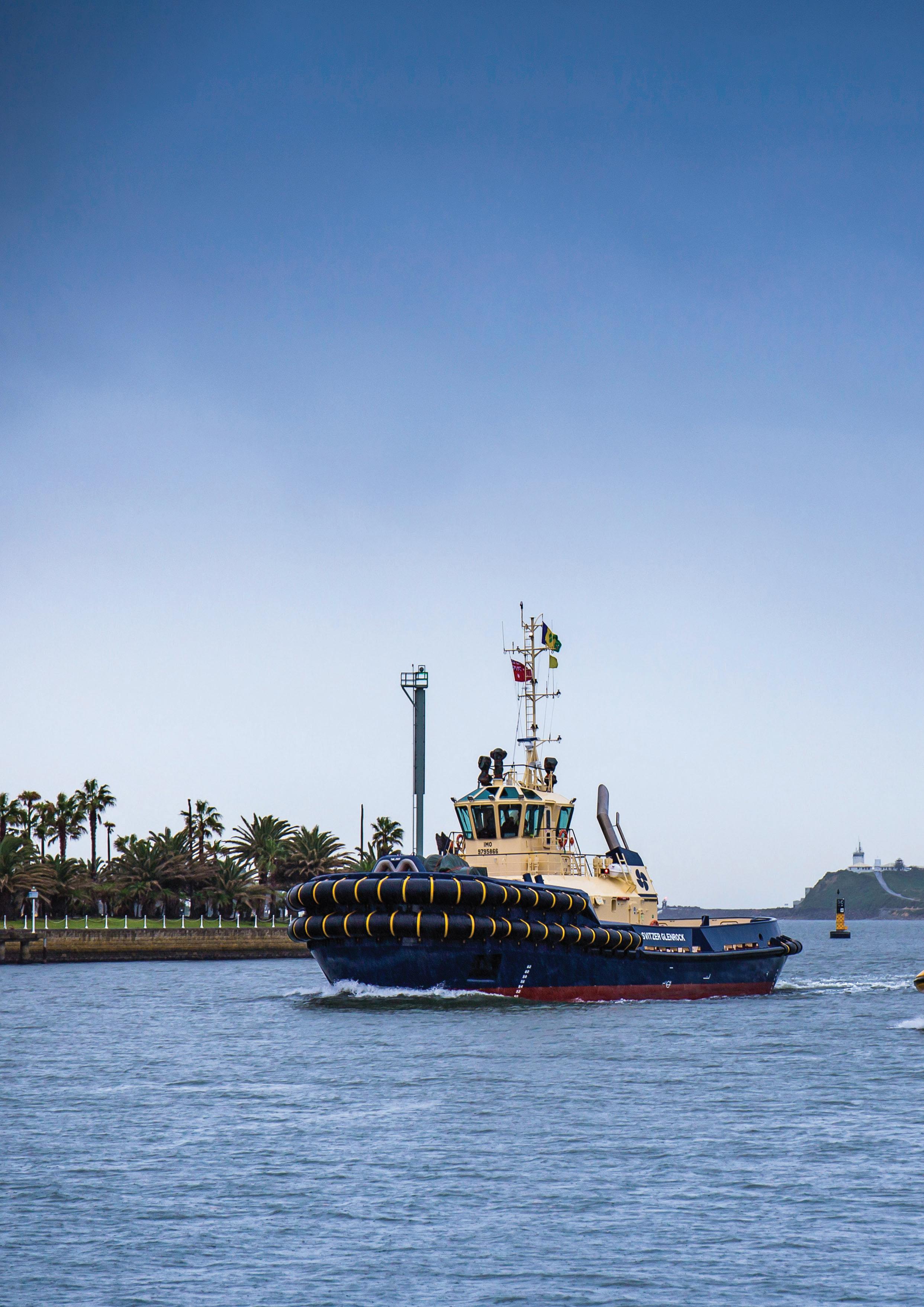


Shoreham
eight-fi
Funding from HSBC UK will enable the port to meet environmental targets on emission reduction and meet regional economic objectives
The port intends to use the funding package to expand cargo handling facilities to keep up with demand, develop our commercial property estate and enhance terminal capacity.
But there are also ambitious aims to play a proactive role in regional decarbonisation and it will continue to invest in the Shoreham Port Green Energy Hub, a pioneering project creating cost effective green hydrogen - a clean fuel for locally based fleets.
“We are delighted to be announcing a new financial partnership with HSBC UK. We are confident we have found a financial partner who understands our 260-year history, our values and community responsibilities as a Trust Port,” said Tom Willis, chief executive officer at Shoreham Port.
“As ever, our Masterplan is focused on improving the port for everyone and this collaboration with HSBC UK will enable the next phase of our sustainable growth. Our plans at the port will continue to facilitate economic recovery, create more good quality local employment and, through the Shoreham Port Green Energy Hub, make a significant contribution to the region’s NetZero ambitions”.
Sustainability-linked facilities from HSBC UK will enable the port to meet environmental targets on waste and emission reduction and meet regional economic objectives around training development and educational placements.
With an added focus on corporate social responsibility, it will also use part of the funding package to launch the port’s biggest ever apprenticeship scheme, creating new jobs for the local community.
Nick Hicks, area director of South East Corporate Banking at HSBC UK, said: “Shoreham Port is an excellent example of an organisation that prioritises championing important

corporate social responsibility whilst managing an essential service to the short-sea shipping industry.
”We are pleased to be able to provide the support needed to enrich the development and investment into all aspects of the port.”
To undertake its refinancing process, the port board appointed EMC Corporate Finance to advise and assist the port in the delivery with its financial strategic plans.
EMC is one of the regions’ leading independent provider of business management and corporate finance advice, supporting businesses across the region.
”Working with the Board it was apparent that, rather than just refinancing existing facilities, what was really needed was to put in place arrangements that would support the Port through the rest of the decade,” said Michael Pay, cofounder and director of EMC.
“Acting as trusted custodians, Shoreham Port’s financial partnership with HSBC will enable the port to grow sustainably while boosting the local economy and drive innovation in the Maritime industry and we are delighted with the successful outcome.”
The UK’s
Port has secured an
gure package with HSBC UK to consolidate existing facilities and fund future sustainable growth
8Photo: Shoreham Port
There are also ambitious aims to play a proactive role in regional decarbonisation and it will continue to invest in the Shoreham Port Green Energy Hub, a pioneering project creating cost effective green hydrogen - a clean fuel for locally based fleets
‘‘
Could you please briefly describe the project to develop the harbour and new cruise terminal?

Tallinn Old City Harbour is the main seaport of Tallinn, located just 10-15 minutes walking distance from the city centre and the UNESCO heritage district Tallinn Old Town, constructed in the 13th century. The new cruise terminal is the newest addition to harbour that already has a marina and two passenger terminals. The harbour is the gateway to Tallinn for millions of guests each year.
Tallinn’s strong historic ties to the sea were severed during the second half of the 20th century when the Soviet regime developed coastline areas with the intent of keeping people away from access to the sea in order to minimise the risk of people fleeing the Soviet Union. The aim when constructing the new cruise terminal was to reinvigorate the historic tie between the sea and the city by reimagining the port’s infrastructure with the intent to open up the seaside to the city and vice versa.
The Old City Harbour’s new cruise terminal was built with the intent to provide the city’s visitors with a welcoming transition from a ship to town and provide both the residents and visitors of Tallinn with a pleasant urban environment . The cruise terminal aims to be an important landmark and a place to visit even when not boarding a ship. The aim when constructing a new cruise terminal designed by Salto Architects and Stuudio Tallinn AB was to build something that is not only a state-of-the-art terminal building for the 500 000
cruise tourists who visit Tallinn every year, but something that will be seen as an integral part of the urban environment – an opportunity for the residents and visitors of Tallinn to reclaim the access to the sea in actively used close harbour area in the heart of Tallinn and a reason to do it.
Subsequently, a multi-purpose building with a rooftop promenade connecting the terminal to the surrounding city centre and the historic Kalamaja, Kadriorg and Old City districts was developed.
The intention of the project was to integrate our seafront with the local community in order to create a friendly and intelligent urban environment for both the residents and visitors of Tallinn.
The harbour in Tallinn is the first and last point of contact where the passengers get the impression of the city and the country – a nice and hospitable welcome is part of the reputation building of the destination.
The project aims to overhaul the entire harbour area into a sustainable, attractive and multipurpose urban area with open seafront and with possibilities for everybody to enjoy.
The new terminal is the most contemporary in the region, designed with the environment and sustainability in mind. Beside leaving the cruise guests an indelible first impression and better service, it is also gives the opportunity for the
event organisers to create more value to the community bringing more national and international events with smaller environmental footprint.
The promenade, which connects the seafront with the city centre, has opened the area for the citizens and guests of Tallinn - the promenade has plenty of seating areas, a restaurant, a children’s playground and outdoor gym. The goal was to build something that is not only a state-of-the-art terminal for tourists who visit Tallinn but something that will be seen as an integral part of the urban environment – an opportunity for the residents and visitors of Tallinn to reclaim the access to the sea.
What about in terms of sustainability, what were the key considerations for the project?
Beside the economic impact that cruise guests and cruise ships bring to the destination, the local community benefits from attending and hosting events in the cruise terminal, the new space will create new business opportunities. The local community also profit from the enhanced outdoor urban space - the promenade on top of the cruise terminal is frequently visited by citizen and guests of Tallinn.

To operate the cruise terminal, jobs are created in the restaurant on the promenade, the information and souvenir selling points in the cruise terminal and organizations that facilitate the events in the cruise terminal.
Besides the fact that the terminal is constructed with the local community in mind, the terminal is also environmentally sustainable. The technical design of the terminal is inspired by a study “Sustainable energetic solutions for cruise terminal buildings in Northern Climate” that was carried out as part of the Green Cruise Port project, co-financed by the European Commission through the Interreg Baltic Sea program.
The terminal is constructed using Kebony wood which has a lower carbon footprint than equivalent hardwoods. The building’s energy needs are met by 725 solar panels adapted to the Nordic climate. This covers 35% of the energy requirement in the cold part of the year, while it provides up to 100% of the energy requirements in the summertime.
The building is heated and cooled by two heat pumps that are connected to an innovative seawater heat exchange. The heat pump system cools and heats with respectively a maximum power of 430 kW and 170 kW. Lastly, at the berth places, innovative wastewater reception facilities are present. This innovation, called the micro tunnel, reduces the flow of wastewater to the city’s sewer systems as the sewers in Tallinn cannot handle the wastewater volume – approximately 200 m3 per hour/per ship (1200m3 in total) - from cruise ships at once.
The open rooftop promenade Port of Tallinn encourages people to walk from the port to the city and vise versa instead of using transport.
This means that the building contributes to two aspects of the EU Green Deal: supplying clean, affordable and secure energy, and building and renovating in an energy and resource-efficient way.
The entire reimagining of the Old City Harbor that started in 2017 when the Masterplan 2030 for the harbour area was commissioned from the London-based architecture firm Zaha Hadid Architectures. The masterplan provides a vision for the long-term development of the entire harbour area. This includes both the areas used by the harbour personnel, the areas used by the passengers as well as the areas that could be made accessible to everyone.
The construction of the new cruise terminal in 2021 is the first step in reconstructing the entire port area that aims to provide the public with better access to the seaside by opening the port area to recreational, commercial and residential use. The aim for the future is to unify the city centre and the three historic districts surrounding the port area, that have been disconnected from each other for decades by an unwelcoming and utilitarian closed harbour area.
The harbour’s central location and the fact it is surrounded by the business and cultural hubs of the city in addition to the generally desirable seaside location mean that the development has all the prerequisites to be a highly prized location to live and work in and to come and spend your free time.
The remodelling of the harbour area is expected to be completed by 2040. While the full-scale reimagining of the entire harbour area is in its planning stage the harbour is currently undergoing a smaller scale transformation focusing on the tight spots of the harbour today.
In addition to the new cruise terminal, the Port of Tallinn has reconstructed the passenger terminal D, constructed a movable pedestrian bridge between the two main passenger terminals thereby removing the need to walk around the marina. The renovations of the area in front of the passenger terminal D was finished in 2022 and replaced the present car focused tarmac square with a park-like area creating yet another place for everybody to use and enjoy.
People should be the focus, when creating the new waterfront district in the harbour area. We also suggest to put the locals first, because in the end the tourists like to visit the areas that locals do.
Can you give some take home advice to other ports and terminals who may be considering such a project?
The aim when constructing the new cruise terminal was to reinvigorate the historic tie between the sea and the city by reimagining the port’s infrastructure
‘‘
Involving multiple stakeholders means complex decisions to be made about the competing demands of environmental targets and economic growth.
Where cruise facilities are embedded in the heart of a major city, sustainability goals need to take into account the high visibility of the cruise business and its perceived impacts on the life of the city and wider region.
In the Peel Ports-owned Port of Liverpool, around 700,000 visitors have stepped off cruise vessels into the city since 2007. The cruise business in Liverpool has recovered well after the Covid-19 hiatus, with the 2021 season seeing calls by more than 100 cruise ships (bringing 80,000 passengers to the city).

Visiting ships dock in Liverpool’s historic waterfront, allowing for an immersive visitor experience as soon as guests step off their ships. The accessibility of city centre amenities is unique among the UK’s cruise ports, with most other UK terminals situated at a further distance from city centres and their attractions.
Cruise Liverpool, which runs the terminal, states that by 2023, it will have facilitated 500 cruise calls, welcomed one million passengers and crew and generated an economic impact of GB£72 million in total since inception. The organisation has plans to expand on this successful track record by building a new dedicated cruise terminal.
These plans have encountered delays as the terminal’s potential impact on the city’s climate targets, in particular its Net Zero ambition, is considered. The existence of high enough long-term demand to justify bigger facilities will also affect whether the planned expansion gets the go-ahead. Meanwhile,
a decision on whether the new development will get the green light, expected in 2023, has been postponed to 2024.
“Being as sustainable as possible is a key focus of our team but there will always be challenges you will have to face along the way,” says John Mawer, head of cruise operations at Cruise Liverpool.
“Cruise terminals naturally target yearly growth of cruise traffic because that is an important contributor to the Liverpool region and a platform for further job creation, but that means you always need to consider how to keep your operations as sustainable as possible to balance that out.”
To do this, Cruise Liverpool is active on many fronts simultaneously. “We always keep up with the latest industry developments so that we can facilitate new-generation cruise vessels’ requirements in port and ensure that supply chain and subcontracted partners are moving at a similar pace in order to support those sustainability goals,” he says.
Cruise Liverpool is currently considering a wide range of developments to enhance the green profile of its facilities.
Mr Mawer explains: “At Liverpool Cruise Terminal we will be conducting feasibility studies into infrastructure improvements to facilitate sustainability, based on the volume of expected traffic and the specific requirements for power and bunkering.”
“We’re working closely with our waste management team to ensure a Zero to Landfill policy for cruise waste and to increase our recycling capacity. Our work will also align with Liverpool City Council’s Major Joanne Anderson’s ‘triple lock’, which has a focus on people, the planet and equality.”
Growing sustainable cruise facilities always requires balancing the interests of multiple stakeholders, writes Michele Witthaus8 A cruise ship berthed in the Port of Liverpool Photo: Cruise Liverpool
‘‘
business and its perceived impacts on the life of the city and wider region
Taken together, it is expected that these interventions will contribute to improving the sustainability of the wider Port of Liverpool, and the city and region, in the coming years. “By increasing our capacity for recycling, we aim to conserve energy, reduce air pollution and conserve natural resources,” says Mr Mawer. “Our teams are also aiming to swap our fleet to purely battery power operated vehicles to reduce the port’s overall emissions.”
“We further aim to incentivise port calls for ships with lowemission propulsion systems. With the ambition of attracting and supporting the greenest ships to Liverpool, we may offer discounts to vessels that meet industry emission reducing targets, wishing to call at Liverpool on multiple occasions.”

Partnerships are a significant part of Cruise Liverpool’s sustainability initiatives. “We have a collaborative and open approach to working with our partners and shareholders to ensure sustainable cruise tourism,” says Mr Mawer. “There’s a focus on education, whether that’s of staff, stakeholders or service users. We’re committed to sharing information, hosting workshops and joining or contributing to memberships of groups specifically directed towards green initiatives.”
In the short term, Mr Mawer says, “the aims are to look at current operations and changes that are possible now. These include recycling and reduction of disposable plastics, engaging with suppliers, moving to a paperless office, and educating staff on the importance of being as sustainable as possible.

“Other initiatives include hybrid working to reduce commutes, encouraging cycling to work and other greener methods of commuting, installing LED lightbulbs throughout our facility, and not using unnecessary lighting or heating in unused areas.”
In the medium term, the port is concentrating its attention on plans for the next five to ten years, including strategies to develop infrastructure and harnessing alternate power and
The organisation is currently working with Liverpool John Moores University (LJMU) and boatyard and marine services company Bluepoint Marine on a sustainability project at the port.
Mr Mawer says: “The cruise sector is investing heavily into new tech and innovation to enable us to sail into a greener future. We plan to explore efficiencies with key stakeholders in the hope that we can jointly promote positive messages and steps forward in the cruise industry in this area. We have recruited an academic from the University of Liverpool for one year and the aim is to produce a paper which considers the current and future movement towards Net Zero in order for Liverpool Cruise Terminal to map out short, medium and long term goals for sustainability.”
l John rvices at the y into eener olders sages e have ool for siders m and th the 2050 h with ntage, ology
He adds that there will also be a focus on aligning with the targets set out by the UK Government’s Maritime 2050 strategy. The strategy prioritises clean maritime growth with a focus on themes including competitive advantage, environment, infrastructure, people, security, technology and trade.
infrastructure and alternate power and energy supply, as well as carrying out feasibility studies into solar, wind or tidal power to help power part, or all, of the facility.
“This will ensure that our facilities are fit for purpose to service new generation ships with newer technologies. For the longer term, our focus is on being ready for 2050,” he says.
In the medium term, the port is concentrating its attention on plans for the next five to ten years, including strategies to develop infrastructure and harnessing alternate power and energy supply
ion n
Where cruise facilities are embedded in the heart of a major city, sustainability goals need to take into account the high visibility of the cruise












Ramboll is a global architecture, engineering and consultancy company with more than 17,000 experts who create sustainable solutions for governments and companies all over the world.
As architects, engineers, designers and consultants, we help clients and communities realise their goals and aspirations in a climate of ever-pressing challenges, collectively navigating towards a flourishing sustainable future. We combine vision with insights to drive positive change for our clients and the wider society, in the form of ideas that can be realised and sustained.









We call it: Bright ideas. Sustainable change.





Why is the Port of Newcastle well placed to host the inaugural GreenPort Oceania conference?

Forming partnerships and sharing knowledge are critical to the ability to create a safe, sustainable, environmentally and socially responsible Port of Newcastle for the future, says Craig Carmody, CEO, Port of Newcastle.
At Port of Newcastle we pride ourselves on not just talking about what we can do, but in taking action and to date we have made great inroads in delivering against our ambitious environmental, social and governance (ESG) targets and objectives.
The inaugural GreenPorts Congress Oceania provides an exciting opportunity for Port of Newcastle, as the host, to share our learnings and collaborate with a broad group of likeminded stakeholders, while showcasing beautiful Newcastle and the capability of our port and the region, to the world.
The future is exciting for Port of Newcastle. Diversification, ESG and supporting our community and economy are our priorities. When you are known nationally and internationally as the ‘world’s largest coal port’ change is always going to be like turning a large cargo ship in the harbour, a measured diversification in tandem with the broader economy, but with the right tools and people around you, the end goals can be achieved.
What makes Australian ports/Port of Newcastle unique in their approach to environmental readiness?
Australia overall has been slower than Europe in addressing environmental concerns, says Nick Livesey, chief financial officer, Port of Newcastle. Despite a resource heavy economy, however, I think we are now catching up and taking advantage of being a country that has vast amounts of
empty, open space with plenty of wind and sun and so can continue to provide energy to the rest of the world.
Port of Newcastle has been a leader in driving forward that transition. With the region’s industrial heritage and main product through the Port being coal, we have a massive incentive to look to the future and shape our business priorities and opportunities now. While we are only an infrastructure asset, we have embedded ESG principles throughout our operations and further pushing the diversification agenda quite hard with our clean energy precinct plans.
In driving environmental readiness, despite our industrial heritage, our port is now considered a global leader in sustainability best practice. Our whole organisational commitment to ESG and diversification has seen us make significant progress towards environmental readiness. In 2017, at the beginning of our sustainability and diversification journey, we started with a GRESB score of 40. We jumped to 75 in 2020 before ranking first across participating ports in Oceania and second globally having achieved a score of 92 out of a possible 100 in 2021.
Our trajectory continues, with our port recently retaining its five-star GRESB rating and increasing its overall score to 95 out of a possible 100 points in 2022 – an incredible achievement in a few short years. And we are committed to doing more to build on our sustainability initiatives into 2023 and beyond.
What do you see as the priorities for the port in the next ten years and what is driving those?
For Port of Newcastle our key priorities are central to supporting diversification and our local community. The diversification of the business is critical. At the moment,
8 PON has a shipping channel that is currently only operating at 50% capacity and supported by developable, vacant portside land, pictured, Dyke Point
we are reliant on bulk cargo, predominantly coal. With the port running through the city of Newcastle, it is central to the economy of the city and wider region – therefore the Port needs to be leading the way on diversifying the economy to create a sustainable future and opportunities for the entire region.
Port of Newcastle has outlined a clear strategic roadmap for the next decade, underpinned by an ambitious diversification strategy and commitment to environmental, social and governance priorities.
As Australia’s deepwater global gateway and a global channel for New South Wales, Port of Newcastle enjoys significant competitive advantages. It is already a major seaport with connectivity to a world-class national rail and heavy vehicle road system, a shipping channel that is currently only operating at 50% capacity and supported by developable, vacant portside land.
Whilst coal exports provide a stable foundation for our growth, we are driven by the need to grow and diversify our trade base to meet the demands of our customers and the containerisation of some bulk trades including coal, fuel, fertiliser, wheat and mineral concentrates.
In 2020, the port broke new environmental ground for maritime authorities in Australia and New Zealand by becoming the first in the region to be certified by EcoPorts, why did you decide to go for certification? Why is this important to Port of Newcastle?
It is important for our shareholders and management team to be doing the best we can in the ESG space and making meaningful change. Joining EcoPorts is a part of that – it shows that we are serious and undertaking real, positive change actions.
It also places us in a peer group where we can inspire others and also learn from each other. In many ways, we all benefit from positive sustainability actions and change will only happen if we work together and share best practices. ESG is an area where competition needs to be set aside and collaboration pursued – things like EcoPorts encourage this behaviour.
Applying for, and achieving, EcoPorts certification was a transparent way of proving our commitment to environmental management and sustainability and our commitment to enhancing our port’s contribution to the social, economic and environmental outcomes for the Hunter Region and NSW. Achieving this certification is important to the Port as sustainability is central to the port’s business strategy and we are actively working to manage the environmental challenges we face as a city-port by focusing on diversifying trade and improving efficiency and safety of the supply chain.
In terms of getting ready for the global energy transition, can you please explain the port’s strategy?
The Hunter Region has been a key energy supplier to Japan, South Korea and Taiwan for decades. In this time, the fantastic businesses along the supply chain have built a loyal customer base who depend on our region for their energy security says Simon Byrnes, chief commercial officer, Port of Newcastle.
The Hunter Region has the REZ, transmission infrastructure and workforce required to deliver the clean energy economy. Although Port of Newcastle is the busiest port on the east coast of Australia, it only uses 50% of its channel capacity, meaning it could handle another 2,500 vessel visits a year, and has a dedicated 220-hectare clean energy precinct ready for development. We are very excited about the clean energy future that Port of Newcastle can contribute to and
the benefits it will bring our region, local community, environment and economy.
The Federal Government has invested AUS$100-million to assist Port of Newcastle enable the clean energy economy in the Hunter. This is because Port of Newcastle and the Hunter offers a unique set of conditions.
We are the only Commonwealth designated hydrogen hub in New South Wales (NSW), 70% of NSW’s electricity is generated here, our port has proximity to three renewable energy zones, multiple sustainable water solutions, a deep water port with 388 vacant hectares and 50% channel capacity available, 16,800 highly skilled METS workers and another 47,600 people indirectly in the resources industry and Australia’s largest electricity user and NSW’s third and fifth biggest electricity users and largest gas user.
Activation of our clean energy precinct is expected to, by the end of this decade, generate AUS$2.1B in additional GRP, create 2900 new jobs for locals and decrease domestic emissions by 330kpta.
What other green projects are on the horizon for the port in the future?
We are working with EnergyCo to enable the delivery of the Hunter – Central Coast REZ, Central West REZ and New England REZ. The logistics task is huge, with over 1000 large scale components to be delivered and the largest wind farm blades measuring more than 100 metres long.
We are working with AmpControl and University of Newcastle to decarbonise our marine fleet. The initial stage could see us decreasing emissions by up to 25%.
Longer term, Port of Newcastle is well positioned to provide a construction, operations and maintenance facility for offshore wind. The Clean Energy Precinct could support offshore wind with a stable baseload of up to 3GW.
Port of Newcastle incorporates green design into all of its new projects from procuring hybrid cranes to meeting the highest standards for green building design.
From the port’s perspective, can you please impart some words of wisdom about how you think ports and terminals can ride out the storm and make the most of opportunities arising from these challenging times that we all find ourselves living in at present?
It’s really about being aware of what is happening across the full supply chain, not just in ports and terminals. While troubling times tend to lead to innovative and technological advances to resolve, it is important to not only understand what is happening in that space in the port sector, but also the shipping lines, distribution centres, producers etcetera.
If you understand what the challenges your direct customers, ultimate end customers and suppliers are facing, it puts you in a much stronger position to be able to react, support, help and benefit, adds Mr Livesey.
The inaugural GreenPorts Congress Oceania provides an exciting opportunity for Port of Newcastle, as the host, to share our learnings and collaborate with a broad group of like-minded stakeholders











Further
call
1329 825335
Book https://www.portstrategy.com/greenport-congress-oceania/buy
Hosted by the Port of Newcastle at Newcastle Club
DAY ONE – Wednesday 15 February 2023
08:00 Coffee & Registration
09:00 Welcome by Chairman/Moderator
09:10 Welcome Address by Craig Carmody, CEO, Port of Newcastle
09:20 Gold Sponsor Welcome Address - Ramboll
Keynote Panel: Options for ports to combat climate change
09:30 - The risks to Ports, Shipping & the Logistics from climate change are increasing.
10:40 This panel will discuss options available to combat these risks hearing from ports, shippers, and companies across the maritime industry. Confirmed panellists include Craig Carmody, CEO, Port of Newcastle; My Therese Blank, Head of Oceania Export Market, Regional Ocean Management, A.P. Moller, Maersk, Rodney Begley, Acting CEO, PNG Ports (Papua New Guinea), Eranda Kotelawala, CEO, Solomon Islands Ports Authority and Michael Blake, Founder & Chief Executive Officer, Zilch Forwarding
10:40 Coffee & Networking
10:55 Pilbara Ports
Matthew Bowdler, Principal Sustainability Advisor, Pilbara Ports Authority Climate change presents our business with opportunities to work with our stakeholders on mitigation and adaptation initiatives. An example of this is creating incentives for tenants to incorporate sustainability requirements such as emissions reduction. We are also working with our proponents to understand new energy opportunities such as clean ammonia and hydrogen.
11:10 Simon Byrnes, CCO, Port of Newcastle This presentation will be discussing establishing a dedicated precinct for all forms of energy and associated technologies, the multiplier effect it will have at the Port of Newcastle as a global gateway as well as a catalyst for employment, growth and diversification.
11:25
Jonathan Abrahams, Head of Maritime Advisory, Advisory Australia Maritime, DNV Australia Pty Limited The presentation will provide a background to the Environmental Port Index (EPI) Portal project as well as share some of the results that include a demonstration of the reporting dashboard/portal that collates, assures and reports data received from vessels.
11:55 Question & Answer Session
12:15 Lunch & Networking
13:40
Joel Katz, Managing Director, CLIA Australasia CLIA members have announced a vision for net-zero carbon cruising by 2050, and action is taking place now to achieve this vision, built on three pillars: Reducing carbon footprint on ships, investing in advanced environmental technologies onboard and partnering with ports and destinations on sustainable tourism.
13:55 Philip Holliday, CEO and Director, Port Authority of NSW Port Authority of NSW have seen a range of initiatives implemented organisation-wide. One significant initiative that is underway includes: Shore Power: world-first 100% renewable electricity shore powered precinct and first shore powered cruise terminal in southern hemisphere commitments, addressing local air quality and noise, and carbon emissions.
14:10 SIHARBOR projects from home and abroad
Olivia Laskowski, eMobility Business Segment Manager, Siemens
14:25 Teresa Lloyd, Chief Strategy and External Affairs Officer, Carnival Australia
14:40 - Question and Answer Session
Further information call +44 1329 825335 or email congress@greenport.com. Book https://www.portstrategy.com/greenport-congress-oceania/buy
15:30 Clean Ports, Clean Oceans: Improving Port Waste Management in the Philippines
Kate Noble, No Plastics in Nature Policy Manager, WWF-Australia WWF will present solutions conducted with the local communities, such as the improvement of the collection of plastic waste with a local organization called Plastic Bank in Manila, the development of a materials recovery facility in a community next to the port of Batangas, and will share how activities with other stakeholders in the port area have been developed to ensure that they do not negatively impact the communities working in the ports.
15:45 Resilient communities: Maximising support resilient and liveable regions through green port strategies
Craig Niles, Principal, Urban Planning, Ramboll NSW is investing in regional economies to drive economic growth, resilience and prosperity. A range of programs exist to attract investment, including infrastructure delivery, improving planning policies for economic clusters and providing business concierge services. We will explore these regional trends and discuss planning implications and opportunities for ports, utilising cases studies from our work in Regional NSW as well as European case studies.
16:00 A partnership approach to environmental sustainability challenges in pacific island ports
Ed Rowe, Senior Engineer - Resilience (Coastal), ARUP
Through environmental assessment of port infrastructure and operations in the Pacific, and the development of a Roadmap for Green Ports (the Roadmap) the opportunity to collaborate to improve was a consistent theme.
16:15 Local Voices – a unique community engagement program based on research conducted by Australia’s national science agency, CSIRO
Trudie Larnach, Manager Sustainability & Corporate Affairs, Port Waratah Coal Services
Port Waratah is pursuing genuine understanding of the expectations of our surrounding communities to meet their varied interests and concerns, extending beyond regulatory compliance and working hard to improve our operational, environmental and social performance. Port Waratah achieves this through listening to our stakeholders through the survey platform, ‘Local Voices’
16:30 Question & Answer Session
16:50 Conference Close
6-10pm Conference Dinner – Hosted by the Port of Newcastle at Merewether Surfhouse
Jackie Spiteri, Director, Sustainable ESG
This presentation will consider what an organisation operating in the maritime sector can do to embrace and integrate ESG into the corporate business model. It will discuss and engage with the delegates on assessing materiality and alignment with the United Nations Sustainable Development Goals. It will also provide a lens on the importance of reporting and disclosure for accountability.
09:30
Further information call +44 1329 825335 or email congress@greenport.com. Book https://www.portstrategy.com/greenport-congress-oceania/buy
Green Financing - Investment risk 101
Nick Livesey, CFO, Port of Newcastle
This presentation will be discussing what lenders are looking at when considering debt transactions with customers and what green financing options are available within the maritime sector and how Sustainable Financing is helping achieve it as well as help maritime sector decarbonise.
09:45 Sustainable Financing
Craig Wilson, Head of Sustainability, Port of Brisbane In the second half of 2022, a major debt refinance was undertaken to secure our ongoing debt finance. A sustainability linked loan was included as a key part of this process. The sustainability linked loan is a multi-tranche loan with a lower interest rate that incentivised ambitious, sustainability targets. There were several major learnings to come out of the process which will be presented in this session.
10:00 David Jenkins, Global Head of Sustainable Financing, NAB
10:15 Question & Answer Session
10:35 Coffee & Networking
10:55 Sal Milici, General Manager Trade Policy and Operations , FTA/APSA
11:10 Green logistics: Discussing the challenges and options of implanting sustainability within the logistic chain. The sustainability of renewables infrastructure – A review.
Kenny Walker, Principal Environmental Scientist, RHDHV
This presentation considers the sustainability of renewable infrastructure and undertakes a life cycle review of current reuse options including bulk battery storage and provides where industry, government and the future supply chain may develop in an Australian context.
11:25 Green logistics: Discussing the challenges and options of implanting sustainability within the logistic chain.
Ivan Spanjic, Chief Commercial Officer –Svitzer Australia
This presentation will explore the policy and technology requirements for implementing carbon-neutral towage in Australian ports, and how this can assist the development of green shipping corridors and broader green port initiatives. It will also cover the partnering opportunities for ports and others in the port supply chain and overcoming shore-side infrastructure challenges.
11:40 Taylor Wamberg, Regional Maritime Commercial Markets Manager, Lloyd’s Register
11:55 Question & Answer Session
12:15 Lunch & Networking
10:55 Australian Maritime Safety Authority
11:10 Margaret Barbouttis, Policy and Operations Director, Ports Australia
11:25 Eranda Kotelawala, CEO, Solomon Islands Ports Authority
11:55 Question & Answer Session
Further information call +44 1329 825335 or email congress@greenport.com. Book https://www.portstrategy.com/greenport-congress-oceania/buy
13:45 Planning for the Green Port: the integrated infrastructure and land use planning to support transition and diversification
Shaun Taylor, Senior Managing Consultant, Impact Assessment, Ramboll
The paper will discuss the planning and logistics requirements for ports to transition to green energy hubs, with a focus on international case studies where this has included transitioning from the transport of fossil fuels and other products.
14:00 How to harness the power of data and digital solutions to tackle air quality and greenhouse gas reduction challenges at ports?
Tam Pham, Sustainability Manager, RightShip
This presentation will explore how ports can utilise the power of data and innovative technologies to pinpoint hotspots, sources and practices that lower air emissions and pollutants in the supply chain. Accounting for air pollution surrounding port areas can help ports accelerate progress in improving air quality and help catalyse the emission abatement action needed to limit global warming to 1.5 degrees in line with the Paris Agreement.
14:15 Lisa McKinnon, Principle Scientist, BMT & Susan McLeod, Manager Environment and Sustainability, TasPorts
This presentation explores the feasibility, effectiveness and cost of each option explored for the existing vessel fleet, using a Net Present Value approach. A number of decarbonisation pathways are explored to assist decision-making and determine the most cost-effective and timeliest greenhouse gas emission reduction approach available with present and future technology.
14:30 Adam van der Beeke, A/Environmental Manager, Fremantle Ports
14:45 Question & Answer Session
15:05 Coffee
15:35
Apia Green Port - Small steps, huge potential Sian John, Environment Director, Coastal and Marine Development, RHDHV, and Silalomanu Isaia, Samoa Ports Authority This presentation will explore the Samoa Port Authority’s journey through a green port ‘health check’ and the development of a Green Port Policy, supported by policy commitments, KPIs and targets focused on optimising resource use and decarbonising port operations, managing operations to prevent pollution and impacts on its surrounding environment and communities, managing and reducing waste, improving operational and navigational safety, increasing efficiency and ensuring resilience to climate change.
15:50 Human Factor in Sustainable Ports
Jeanine Drummond (She/Her), MD & Principal Maritime Advisor, Integral Maritime The key theme being highlighted is the contribution of people, and through human performance gaining the best outcomes for sustainable green ports, including opportunity to improve diversity in minority representation.
16:05 Matt Stephenson, Snr Manager ESG and Investor Relations, Port of Newcastle
The presentation discusses the role of the port in developing sustainably as well collaborating with other stakeholders in helping with their sustainable development. Highlighting the importance of diversifying the Port of Newcastle’s trade, measuring, protecting and enhancing biodiversity within its lands and working towards Net zero through a number of decarbonisation initiatives by 2040. Through to addressing societal issues such as promoting diversity and inclusion in the workforce and mitigating modern slavery in the supply chain.
16:20 Sustainable
Fiona Robinson, Country Market Director, Ramboll The paper details the range of metrics that can be included in a NEBA evaluation, how these can be selected, and the information required to inform the evaluation. A case study will be presented showing the application of the tool in a semi-quantitative evaluation to identify the most sustainable remediation option.
16:35 Question & Answer Session
16:55 Conference Wrap up by Conference Chairman/Moderator
17:10 Conference Close


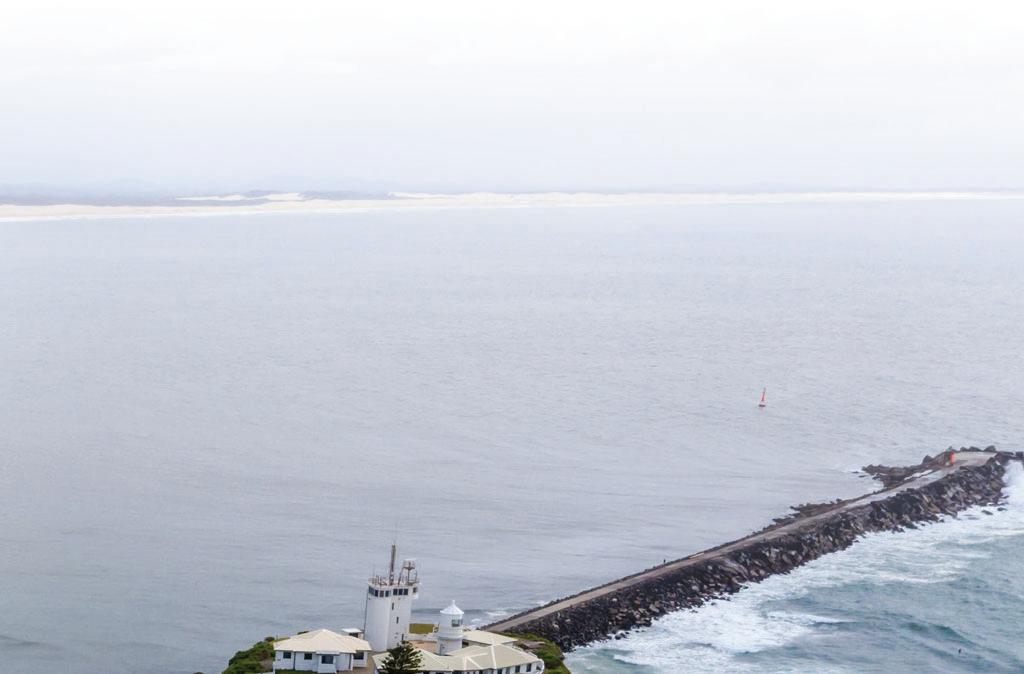



The project is taking place within the Hauraki Gulf, through which ships approach and leave Waitematā Harbour and the port.
POG is based on Waiheke Island, which sits within the gulf. The group has been in a three year court battle with PoAL with regard to dredging plans. The port requires deepening of the Rangitoto Channel for the safe passage of larger ships, while Protect Our Gulf is committed to ensuring that any work undertaken by PoAL is done in a way that is respectful of Māori cultural values and results in more positive environmental outcomes for the Hauraki Gulf.
The groups have now come to an agreement which has the mussel bed restoration joint initiative as a cornerstone. The agreement also ensures that PoAL will support ongoing monitoring of the site for disposal of dredged material and look for opportunities to relocate as much of the dredgings as possible back within the dredge precinct rather than disposing it at a consented disposal site.
As part of the agreement, PoAL will provide funding on behalf of POG to the mussel bed restoration work being done by Revive Our Gulf (ROG). ROG’s restoration project work is also in partnership with iwi/hapū (local indigenous tribes and sub-tribes) and local communities - bringing together expertise in marine science and Mātauranga (local knowledge), consenting and biosecurity.
Looking forward, POG and PoAL have committed to engaging and working positively and proactively together, including the possibility of setting up a joint working group, to ensure that better environmental and conservation outcomes are central to the Port of Auckland’s ongoing activities.
Following the agreement, PoAL received the consent required to dredge the Rangitoto Channel and dispose of dredged materials at the designated disposal site. The consent had been held up by the legal challenges.
POG says its main aim in bringing the litigation was to challenge the need for dumping in the Hauraki Gulf and to highlight the potential effects the activities might have on Māori cultural values and the environment.

“Having achieved this, we are pleased that the way forward is not ongoing and expensive court cases but instead proactive discussions with all stakeholders as to how to better look after our very degraded oceans,” says Shirin Brown, chair, POG.
“The important focus now must be how we can best protect the moana (sea) and its organisms. Notwithstanding that Auckland is a port city, we have to actively do better into the future as businesses and communities to question all projects which represent significant degradation to our marine environment,”
Ports of Auckland CEO Roger Gray says he is committed to engaging with and working with the community and stakeholders for the health of the harbour.
“As one of the largest users of the Waitematā Harbour, we are committed to ensuring we do our part to look after it. Over the past ten years the port has been working proactively on the protection of Brydes whales in the gulf and we are now pleased to partner with Protect Our Gulf on the mussel bed restoration also. We believe this partnership and work with other stakeholders will lead to more positive environmental outcomes.”
Auckland is New Zealand’s largest import port, serving the country’s main population base.
Ports are vital to shipping’s energy transition and their role in a net carbon neutral future is set to grow as more of the fuels needed to support a low carbon industry are produced in port locations..

The much-touted ‘green corridor’ concept is founded on the availability of low and carbon-neutral fuels at set points in the global logistic chain, giving owners confidence that the fuels they need will be available to bunker their vessels.
The ability of the industry to achieve low carbon operations is a function of clean fuel production and much of the discussion reflects the chicken and egg status of fuel availability. Demand for fuels including methanol is rapidly increasing as shipowners order more vessels compatible with the liquid alcohol fuel, the most recent being COSCO’s order for 12 24,000 teu methanol dual-fuel container ships.
While conventional methanol produced from natural gas is widely available at more than 100 of the world’s leading ports, the production of renewable products is currently low.
Ports hold the key to providing the locations, the facilities and in some cases the carbon sources that could be used to create a sustainable supply of marine fuel. With the right policy signals and investment from public and private sources, they could become hubs for decarbonisation beyond conventional diesel fuel bunkering.
Ports need to achieve several goals; reduce emissions
across their port complex and develop critical services that meet new demand for cleaner fuels while creating long term employment and income.
Alongside cargo handling and distribution this will increasingly include production sites for renewable fuels using electricity produced from offshore wind and feedstock sources such as municipal solid waste to create clean fuel.
Such projects reflect and expand on the regional role that ports play in their local economies, providing employment into the logistics chain and in supporting the local workforce as well as related manufacturing and skills.
Projects like Bia Energy Operating Company’s plans for a US$550m blue methanol production plant at the Port of Caddo-Bossier in Shreveport, Louisiana would create 75 direct, high skilled jobs and would result in 390 indirect jobs, according to the local development agency. Nearly 350 construction jobs would be created at peak construction for the project.
At the other end of the scale, plans by a consortium including AP Moller-Maersk will see the construction of an industrial-scale production facility for sustainable road, maritime and jet fuels in the Copenhagen municipality to include e-methanol. Bringing together the demand and supply side of the equation the partners believe it could result in one of the world’s largest electrolyser and sustainable fuel production facilities and in the process establish an entirely new local industry.
The model applies regardless of the location or application. Denmark’s tiny Hanstholm Harbor plans to combine solar and wind energy plants with a Power-to-X facility for the production of 130,000 m2 of e-methanol and hydrogen in the port’s hinterland.
Plans for the proposed plant include a production capability of 530,000 metric tonnes of methanol annually, using natural gas as a feedstock with carbon capture, reducing CO2 emissions by more than 90% compared to conventional methanol plants.
Danish renewable energy developer European Energy has signed with the Port of Aalborg to option a 25-hectare site as the location for a new 120 MW electrolysis and associated e-methanol plant. The plant will produce around 75,000 metric tonnes of e-methanol per year and will be approximately twice the size of the plant European Energy is currently in the process of establishing in Aabenraa in Southern Denmark.
Some of Europe’s most strategic ports have identified the opportunity of creating methanol from renewable electricity or waste sources.
Gothenburg Port Authority has published Methanol operating regulations for ship-to-ship bunkering and has ambitions to create a value chain that would make it the primary bunkering hub for renewable methanol in Northern Europe.

In parallel to the EU’s clean fuel strategy, UK port operator Global Energy Group has partnered with Swiss energy company Proman to develop a renewable power to methanol plant in Scotland’s Port of Nigg. The so-called Cromarty Clean Fuels Project will utilise local industrial sources of captured carbon dioxide and harness excess wind power to produce green methanol.
The Port of Antwerp-Bruges has joined a consortium including the investment company of the Flemish Government to produce sustainable methanol, with a demonstration plant scheduled to start this year and produce 8,000 tonnes of sustainable methanol annually.

Also in Belgium, North-C-Hydrogen is the first large scale demonstrator project of North-CCU-Hub, consisting of a 63 MW electrolyser plant drawing renewable energy from offshore wind to create green hydrogen and a broad range of e-molecules including Methanol.
The Port of Rotterdam and GIDARA Energy have joined forces to create an advanced biofuels facility which will convert non-recyclable waste into sustainable methanol, using a site provided by the port. Advanced Methanol Rotterdam will achieve a reduction of 350,000 tons of GHG emissions per year, producing approximately 90,000 tonnes of renewable methanol yearly by converting 180,000 tonnes of local non-recyclable waste that is currently being incinerated.
GIDARA’s Advanced Methanol Amsterdam is located in the Port of Amsterdam’s Biopark, a development location for producers of renewable fuels. The facility will produce an
average of 87,500 tons of advanced methanol per year by converting non-recyclable waste equivalent to that of 290,000 households yearly, which otherwise could be landfilled or incinerated.
Many of these projects include member companies of the Methanol Institute, which serves as the trade association for the global methanol industry. Traditional methanol producers and new market players are partnering with ports to expand the availability of low carbon and net carbon neutral methanol for the maritime industry.
These and other projects form the ends of a chain that will ultimately span the world’s shipping lanes. Applying the Green Corridor concept for these new fuels will enable owners to make fleet renewal decisions based on fuel availability. It allows ports to plan for future investments and enables policymakers to send clear signals to the market. Ports are indispensable to shipping – and will play a pivotal role in its decarbonisation.
Ports hold the key to providing the locations, the facilities and in some cases the carbon sources that could be used to create a sustainable supply of marine fuel
‘‘Photo: Port of Antwerp-Bruges 8 Gregory Dolan, chief executive officer, The Methanol Institute
Some of Europe’s most strategic ports have identified the opportunity of creating Methanol from renewable electricity or waste sources
‘‘Photo: The Methanol Institute

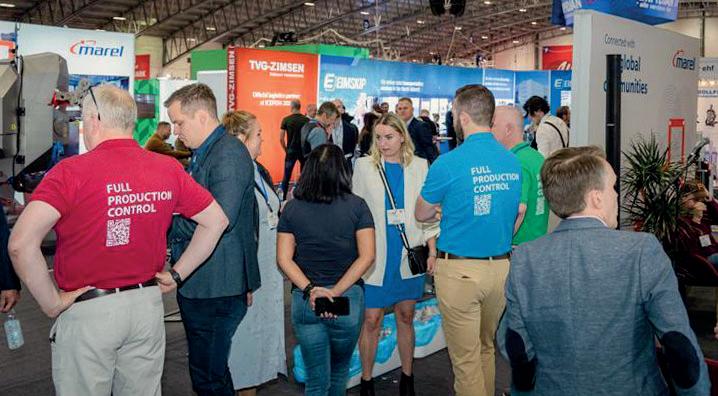

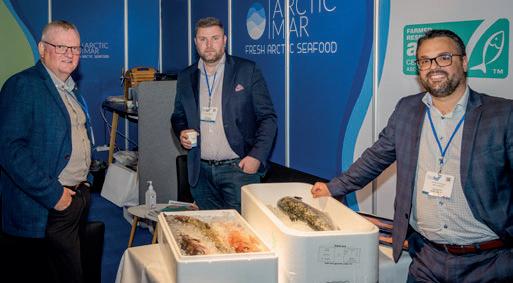
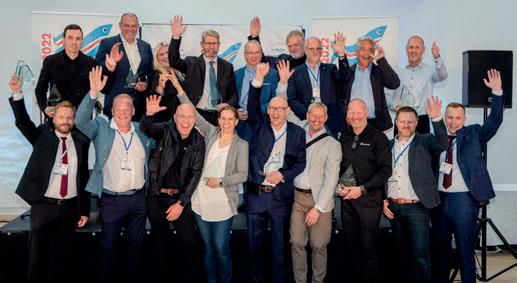



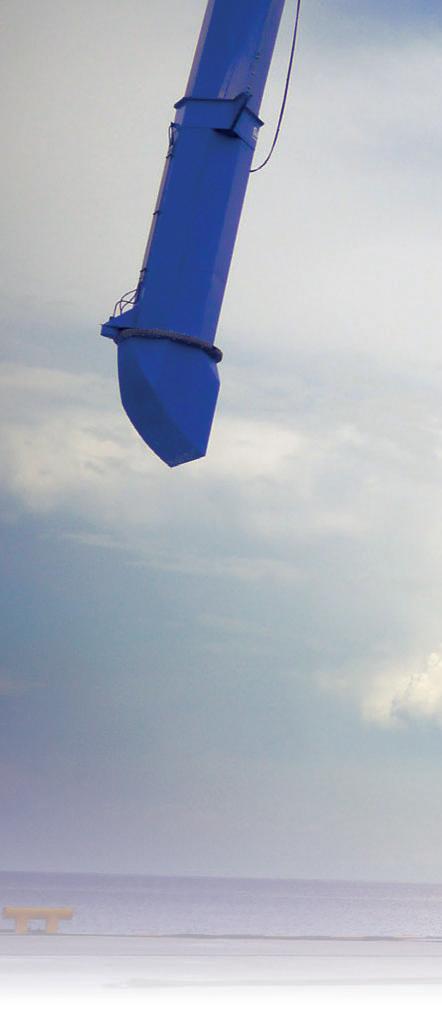
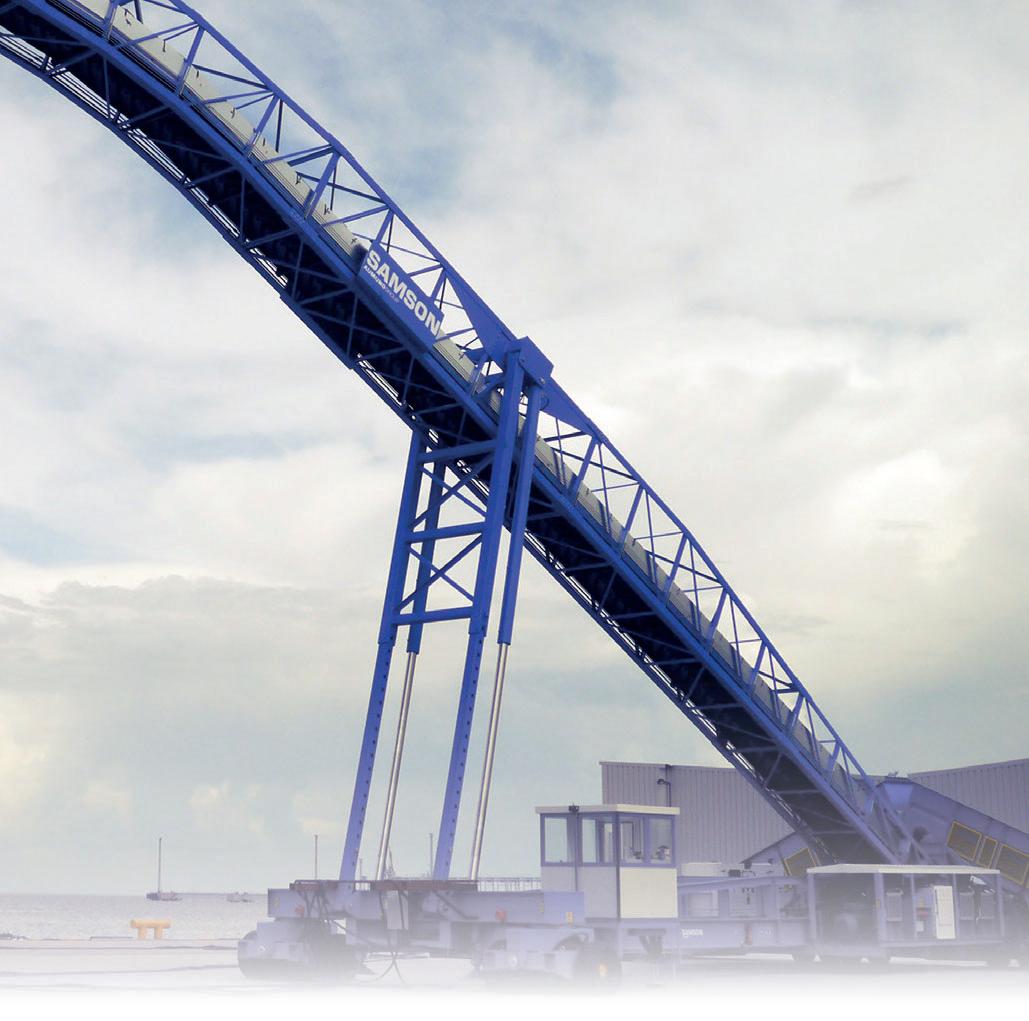








Maqta Gateway, the digital arm of AD Ports Group, Emirates Post Group and SkyGo will collaborate on a trial programme that will deploy aerial drones to carry parcels and documents to specified Emirates Post sites across the emirate of Abu Dhabi.
”Drone services could enable greater convenience and faster delivery times for customers across Abu Dhabi, while ensuring a positive environmental impact,” said Dr Noura Al Dhaheri, CEO, Maqta Gateway, AD Ports Group.
“Margo Hub is a state-of-the-art integrated digital marketplace for all logistics needs, from trucking and warehousing through to the last mile and express delivery, so the expansion into drone services is a seamless extension.”
Beginning with short-range journeys, the programme will expand to long-range tests with an increased capacity to assess demand and understand the wider benefits.
The objective is to provide a sustainable, user-friendly service that can carry vital medical supplies, fresh foods, and urgent documents rapidly, while providing real-time tracking.
Maqta Gateway will deploy its integrated digital marketplace, Margo Hub, to facilitate online transactions between customers and Emirates Post Group, which in turn will manage the service and provide tracking and status updates, while SkyGo provides the drone solutions.
Details of the trial programme will be released in due course, with a full commercial offering planned for launch in the next year, pending approval.
In
Notably, the group has built new strategic relationships within the region and beyond, which has enabled it to open new trade corridors between the Arabian Gulf, the Indian Ocean, the Red Sea, East Africa, and Central Asia.
“Throughout 2022, AD Ports Group has demonstrated its consistent efforts to evolve the services we offer to customers, while supporting Abu Dhabi’s aims to be a leading global hub for trade and logistics,” said H.E. Falah Mohammad Al Ahbabi, chairman, AD Ports Group.
“As we work to further develop infrastructure across assets in the UAE and beyond, our objective is to position the company as a global enabler that supports industrial growth and contributes to our
8 Drone services could enable greater convenience and faster delivery times for customers
8 The drone collaboration with Emirates Post Group and SkyGo is playing a key role in supporting AD Ports Group’s ambition to become a global logistics hub
leaders’ strategic aims to diversify the UAE economy.”
As already discussed, the group’s digital subsidiary, Maqta Gateway, played a key role in supporting AD Ports Group’s international
expansion in multiple areas, to include its drone collaboration with Emirates Post Group and SkyGo.

But major acquisitions have also played a key role in AD Ports Group’s growth story in 2022. The company completed its first international acquisition in September, acquiring a 70% stake in Egypt’s Transmar and TCI.
This followed with agreements to acquire an 80% stake in Global Feeder Shipping (GFS), which will see the group significantly expand its fleet and container capacity, along with a 100% stake in Spain’s Noatum, a global logistics giant.
Upon completion, these transformational investments will consolidate AD Ports Group’s position as a market leader across multiple industries, operating ports and terminals around the world, with a fleet of 175 vessels, a feeder container capacity of around 100,000 teu and a global logistics brand.

A new partnership will trial a new initiative that could provide comprehensive aerial drone delivery for Abu DhabiPhoto: AD Ports Group
2022, AD Ports Group continued its drive to position Abu Dhabi at the frontier of world trade, by improving and expanding its logistics and services for customers.Photo: SkyGo
article,
There is an urgent need for marine infrastructure construction projects to ensure a more sustainable outcome. With the majority of human population residing along coastlines and the intensive process of coastal armoring due to increased storminess and prediction to sea level rise, an increased focus should be given to the neutral marine resources.
Concrete structures and coastal development can be incredibly damaging to marine life and to natural habitats and more must be done by waterfronts asset owners to ensure the regeneration and protection of native marine life.

Global marine biodiversity is under threat from many human causes. The extinction of one species, or one micro ecosystem, has cascading impacts that can ultimately affect the entire food web. Coastal waters are one of the most highly productive ecosystems in the marine environment and as such, provides a range of ecosystem services such as biodiversity, carbon sequestration, nursery grounds and primary production.
Therefore, it is in our own vested interest to promote responsible construction methods that will allow marine infrastructure such as ports, breakwaters and urban waterfronts to support the development of balanced and healthy marine life.
ECOncrete is looking to set new standards in responsible marine construction.
Our technology allows concrete infrastructure to provide a range of ecosystem services by supporting the development of marine life on them. ECOncrete’s patented technology
modifies the local concrete and making it friendly to the environment, as well as creating the spaces needed for marine organisms to develop and grow.
ECOncrete technology has been tested and validated in a variety of marine conditions and shown success in temperate, tropical and estuarine ecosystems. Across studies and projects, the technology has shown to increase biodiversity, reduce the dominance of invasive species by promoting native ones and generate an active carbon sink through the growth of marine life. The technology, ecological and structural performance have been documented in various peer-reviewed scientific papers.
The technology also promotes bio protection thereby bettering the durability and longevity of structures by the growth of organisms like oysters, barnacles, tube worms and coral, which adhere to the concrete.
In addition, it can be integrated into any concrete made coastal and marine infrastructure and shift them to promote biodiversity rather than damaging it. It is the only environmental concrete technology that is integrated directly into the construction process of marine infrastructure, making them promote ecosystem services while servicing their original purposes.
We provide our clients with a technology that allows them to use local materials and local work force and to construct their waterfront to service both human activities and nature at the same time.
ECOncrete’s bio-enhancing technologies have been developed so that they can be easily implemented into standard manufacturing methods in a cost-effective and scalable manner. It’s based on an admixture and unique
In this
GreenPort talks to Dr Ido Sella, co-founder and CEO of ECOncrete on how construction projects are becoming more sustainable8 ECOncrete created a breakwater at the Port of Cala Ratjada in Mallorca, which could also provide ecological benefits to local marine life Photo: ECOncrete
surface modifying agents and specifically designed liners and form inserts that can be incorporated into any concrete casting methods.
The company works closely with industry leaders, ranging from concrete machinery providers to concrete and cement giants and world-leading marine engineering firms. Our aim is to provide the next-generation concrete solutions to allow responsible coastal and marine construction that addresses both structural and environmental performance. By using the technology, assets owners such as ports can gain advantages in permitting and mitigation process, increased carbon sequestration capabilities as well as form the scientifically proven bio protection that provides structural benefits and lower maintenance needs.
Port developers appreciate solutions with ecological benefits that do not compromise structural or operational performance. We have seen this on several of our projects, including the Port of Vigo, Rotterdam, Hamburg, San Francisco and San Diego.
For instance, our new single layer armour concrete unit, the COASTALOCK, provides the needed strength and durability to effectively attenuate wave energy and limit coastal erosion similar to other concrete armour units available in the market, but at the same time provide missing ecosystem services and ecological uplift.
Recently our technology was used at the Port of Cala Ratjada in Mallorca, Spain, see box out. This port was severely damaged in recent years from Mediterranean winter storms and required an extensive reconstruction of the outer breakwater by concrete cubes and single layer concrete armor units. ECOncrete’s technology to enables diverse marine ecosystems develop on the breakwater, which in turn also strengthens the infrastructure.
Our technology was also recently used in the construction of a new pier at the Port of Malaga and seawalls at the Port of Vigo, for shoreline stabilisation measure at Neptune Marina (NJ, USA) and at a French Navy port reconstruction.
In addition, ECOncrete technology has been recommended by the Dutch government and the US Nature Conservancy for offshore wind infrastructure construction, as well as by Natural England for scour and cable protection.
Offshore turbines require scour protection and sometimes massive concrete foundations to anchor them in. This can lead to local ecosystem destruction and the proliferation of invasive and nuisance species. However, by incorporating our bio-enhancing concrete solutions, the offshore wind industry can significantly reduce its overall environmental impact and even provide ecosystem services that were never associated with these concrete infrastructures in the past.
A good example of this is our novel Droplock Ecological
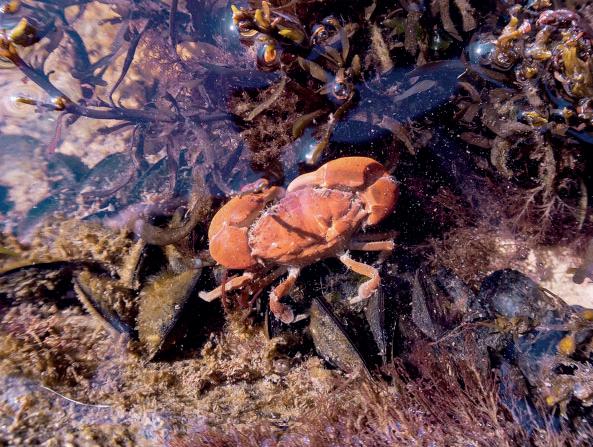
scour protection system, recently
The new ecologically beneficial concrete scour protection units for offshore wind turbine foundations were installed this year for the first time 12 miles off the shore of Long Island, NY in coordination with the New York State Department of Environmental Conservation.
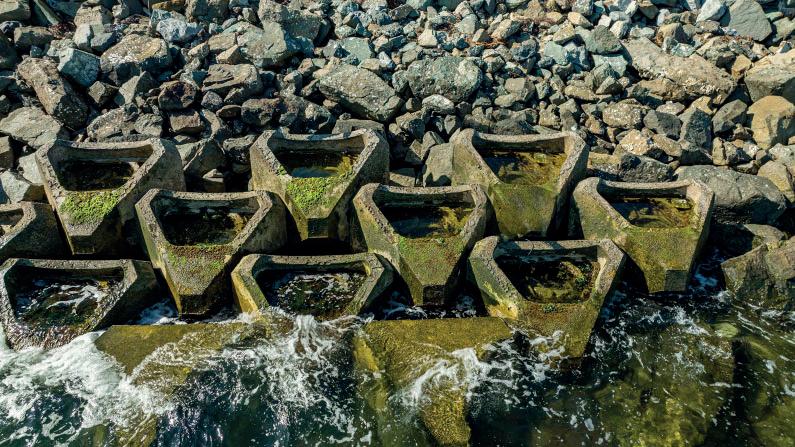
Together with our partners Holcim, we worked to redefine offshore scour protection through the development of a novel concrete unit that requires up to 30% less material, minimises native habitat degradation and supports ecological uplift in offshore wind projects.
We hope to do more of these projects in the future. In addition to this, we will continue to ensure that it ECOncrete continueds to grow as an environmentally responsible company.
Since its creation 10 years ago, ECOncrete has grown globally with projects in all parts of the world, from coastal protection to offshore infrastructure.
As innovators, we have set a new standard in the industry for responsible marine construction and our scientific research and development never stop in our quest to change the ways future marine infrastructure will look and function.
launched by our partnership with Holcim US, with the support of the USA Department of Energy and the BIRD Foundation.It is in our own vested interest to promote responsible construction methods that will allow marine infrastructure such as ports, breakwaters and urban waterfronts to support the development of balanced and healthy marine life
8 ECOncrete’s COASTALOCK technology also provides missing ecosystem services and ecological upliftPhoto: ECOncrete
Our aim is to provide the next-generation concrete solutions to allow responsible coastal and marine construction that addresses both structural and environmental performance
‘‘
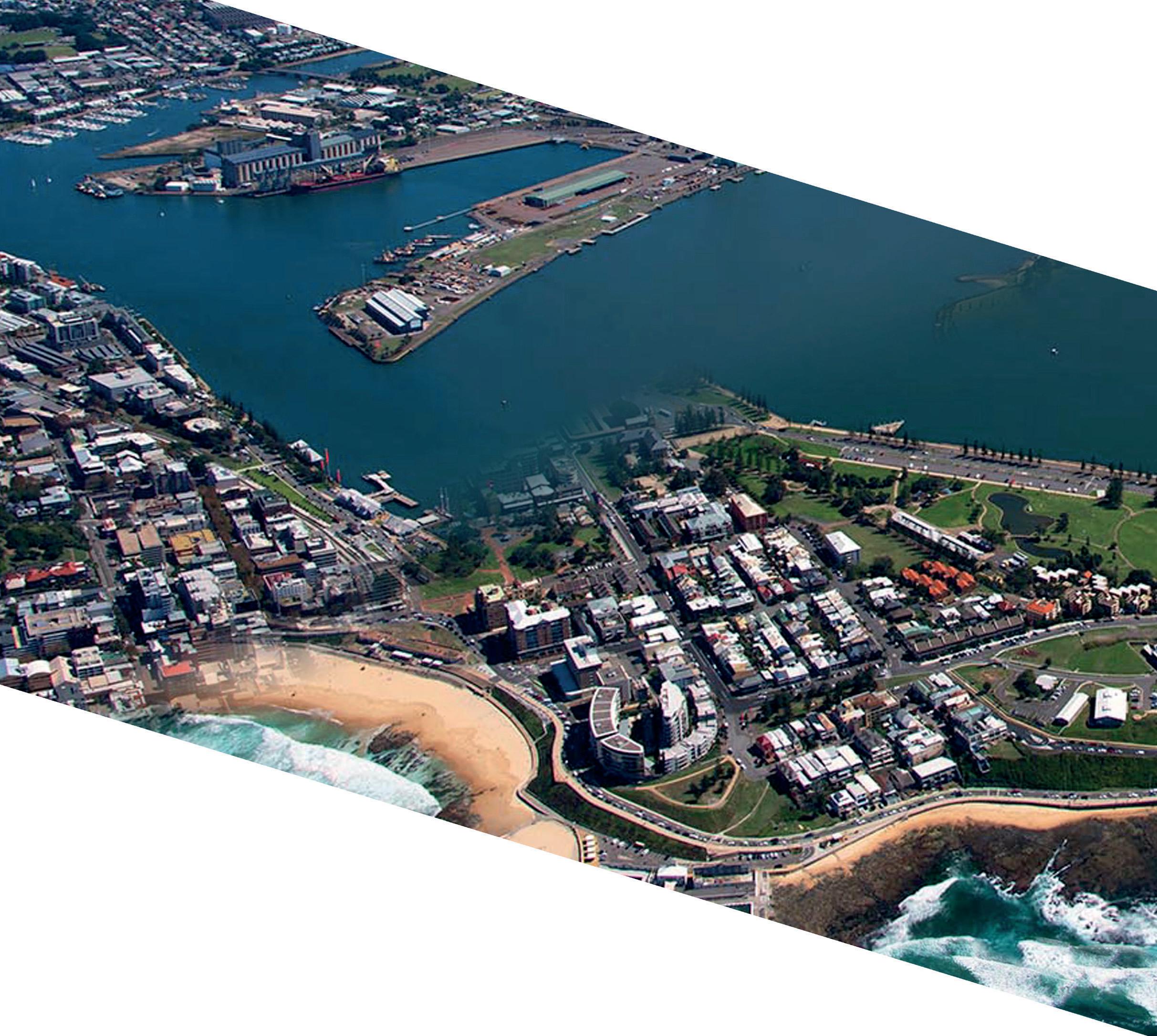







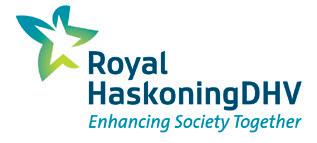


The port of Maio, in the archipelago in the central Atlantic Ocean, was recently upgraded after successful completion of the rehabilitation of its jetty, the construction of a roll-on, roll-off platform for ships, and associated access roads.
Maio’s modernisation has now reduced the period it takes to travel by sea the 49km distance between Praia, the capital city of Cape Verde, to Maio island, from three hours to less than an hour. Moreover, the maritime transportation of goods such as salt, cheese, fish and other tradeable Cape Verdean commodities has been eased.
Inauguration of the upgraded Maio port in late September 2022 by the President of the African Development Bank, Dr Akinwumi Adesina, also boosted the global visibility of Cape Verde’s Maio Biosphere Reserve that contains the entire island and its six protected marine zones, which include Maio Island Natural Park and Cimi-dor Lagoon Natural Reserve.
Maio Biosphere Reserve is home to turtles, cetaceans, and fishes such as the lemon shark and tiger shark according to the United Nations Environmental Programme (Unep). The UN agency also says the island hosts more than 256 different kind of animals, including three lizard species, with more than 100 varieties of migratory birds visiting the region every year.
The modernised port has also made travel to the Maio Biosphere Reserve easier for visiting tourists.
Cape Verde’s tourist industry accounts for 25% of the island nation’s GDP, 23% of formal jobs and 55% of the nation’s exports.
“Maio has great potential for sustainable tourism and a good balance between the environment and the economy,” said José Ulisses de Pina Correia e Silva, prime minister, Cape Verde.
In 2019, Cabo Verde received 48,500 cruise ship passengers on 147 ships, according to the International Trade
Administration of the U.S. Department of Commerce.
In the first quarter of 2022, Cabo Verde received 25 port calls from cruise ships and 17,693 passengers.
AfDB, which provided €17.87 million to fund the project, says Maio port is critical for the growth of maritime transportation Cape Verde “given its geographic location.”

Maio has become an integral part of the 3,164km Praia–Dakar–Abidjan corridor, one of the 11 strategic transport corridors that largely benefits Cape Verde and Senegal. The corridor is being supported under the Global Gateway Europe-Africa investment package announced at the European Union-African Union summit that was held in Brussels between 17 and 18 February 2022.
The cost of the modernisation of the port runs to an estimated cost of €36 million, with AfDB providing €17.87 million while the Bank’s strategic partner, the European Union, financed the project with €11 million to complement the €7.8 million provided by Cabo Verde government.
For AfDB’s Dr Adesina, inauguration of Maio port marked yet another milestone for Cape Verde, which is currently in the process entering into a licensing contract for the management of all the country’s nine ports.
“This beautiful port will transform the face of the economy of Maio,” said Dr Adesina, adding, the port “will become better connected to the rest of the country, rapidly expanding business and economic opportunities and boosting tourism.”
Meanwhile, AfDB is also financing the upgrading of Cape Verde’s Palmeira port, which when fully completed, will complement Maio port’s passenger and cargo capacity with the annual number of sea-bound passengers expected to grow by 34%, from 41,700 to over 55,000 in 2024. Merchandise traffic is also expected to rise by 184%, from 150,900 to 429,000 tonnes.
Shem Oirere looks at how a Cape Verde port has been modernised to achieve shorter transit times and lower CO2 emissions8 The port of Maio in Cape Verde has been recently upgraded Photo: Port of Maio
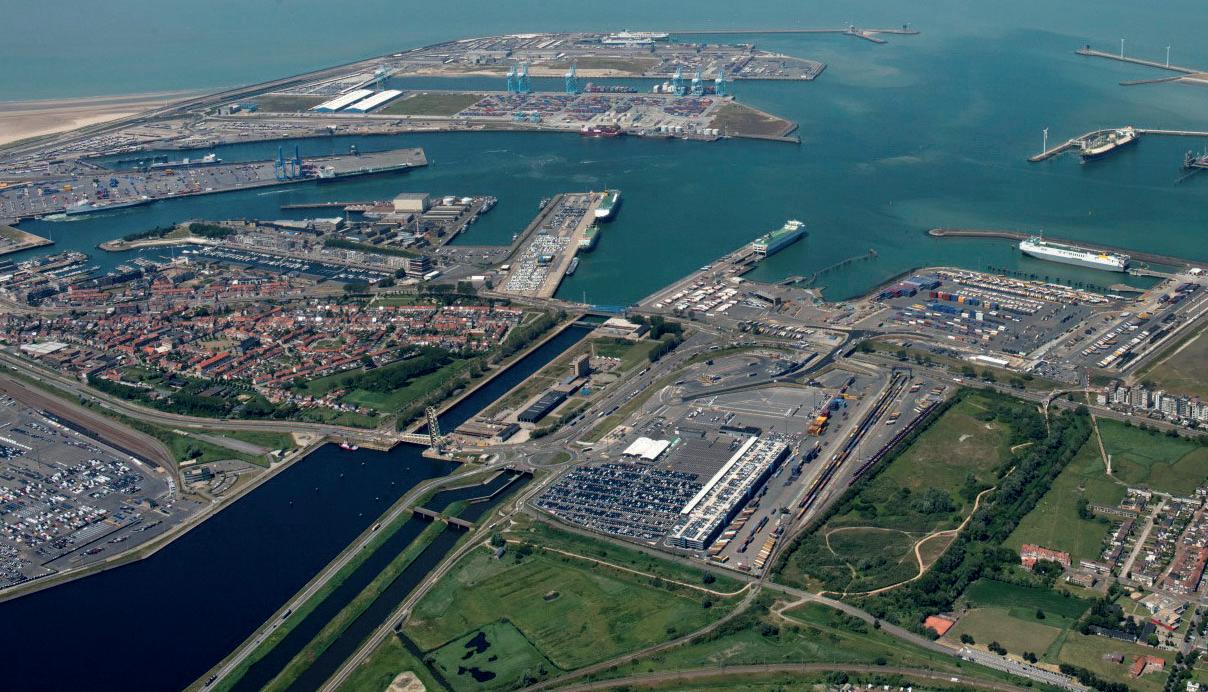


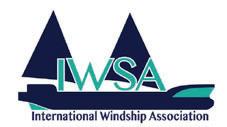

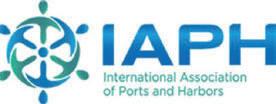


This might be the big challenge for the year and probably years to come. Giving an economic outlook for Europe’s ports might become a mission impossible and will require next to a full impact analysis of the policy ambitions and regulatory context, a deep understanding – or at least an attempt – of the geopolitical context. Besides, port strategists do not only have to look at transport and logistics but also at energy markets.
Looking at the policy side, we expect final breakthroughs and agreements on the for ports most relevant pillars of the Fit for 55 package, being the new Alternative Fuel Infrastructure Regulation, the Fuel EU maritime initiative, the Emission Trading scheme for shipping and a new renewable energy target.
These policy measures will be amongst others a main driver for huge investments in onshore power supply and overall investments in new energies and their related supply chains in ports. Moreover, just before the end of the year, the EU Council agreed on an urgency measure which will allow for smoother permitting procedures for renewable energy projects, also in ports.
China is “opening” again but is at the same time going through a severe Covid wave as far as we know and can judge. Will the positive effects of the opening up be hampered by high illness rates and leading again to temporary closures of production units and disruptions? Or will the opening up rather push the demand for energy in China and put again additional pressure on Europe’s energy needs and prices?
The measure will be in place until summer 2024 and is one of the initiatives taken by the Commission in the context of the RepowerEU plan to respond to the current energy crisis by boosting renewables. While national governments have agreed with the strict and short deadlines for issuing permits in that context, it remains to be seen how successful it will be applied. Will it be a game changer for the sometimes very difficult permitting processes in Member States?
But next to the many new policy measures, we are living in a new geopolitical reality with many factors of uncertainty and change. Europe’s ports are in the middle of all this. I am not the right person to draw the full picture but let me flag up some points.
It is clear that the Russian invasion in Ukraine is in the first place impacting Europe and hence its ports. How long will this take, how will this evolve?
What will be the impact of the US inflation reduction act? Will it as some say put a spoke in the wheel of Europe’s ambitions on renewable energy? And what about the huge inflation rates we are seeing in Europe. How will these slow down the planned investments into greening?
It is clear that setting course for the new year will not be so easy, but I do believe that the resilience and agility that Europe’s ports have demonstrated over the last years are important factors to navigate and lead the way forward.
It will also be important for Europe, the member states and their respective governments to understand that ports are part of the solution and need to be supported in their role. Ports must be recognised in their wider role and cannot any longer be judged only on the number of tonnes or teu that are passing through the ports.
Their strategic role, their contribution to the energy supply, in particular the renewable energy supply, will need to be considered as well. At ESPO we hope that this more comprehensive role is looked at in the review of Europe’s Transport Infrastructure policy, another policy initiative on our table this year.

How do you start a new year with new intentions, ambitions and strategies in a world full of uncertainties? writes Isabelle Ryckbost, secretary general, ESPO8 Isabelle
Ryckbost, secretary general, ESPOPhoto: ESPO
Giving an economic outlook for Europe’s ports might become a mission impossible and will require next to a full impact analysis of the policy ambitions and regulatory context, a deep understanding – or at least an attempt – of the geopolitical context
‘‘
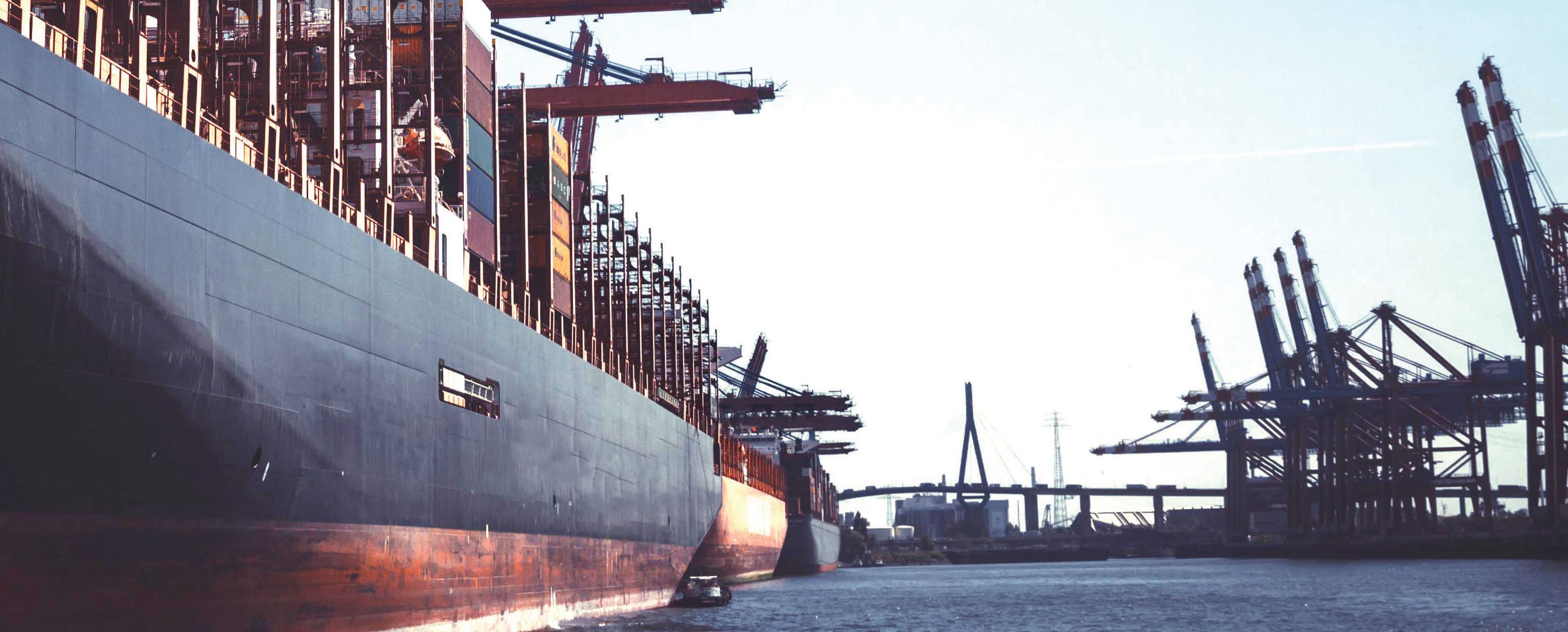



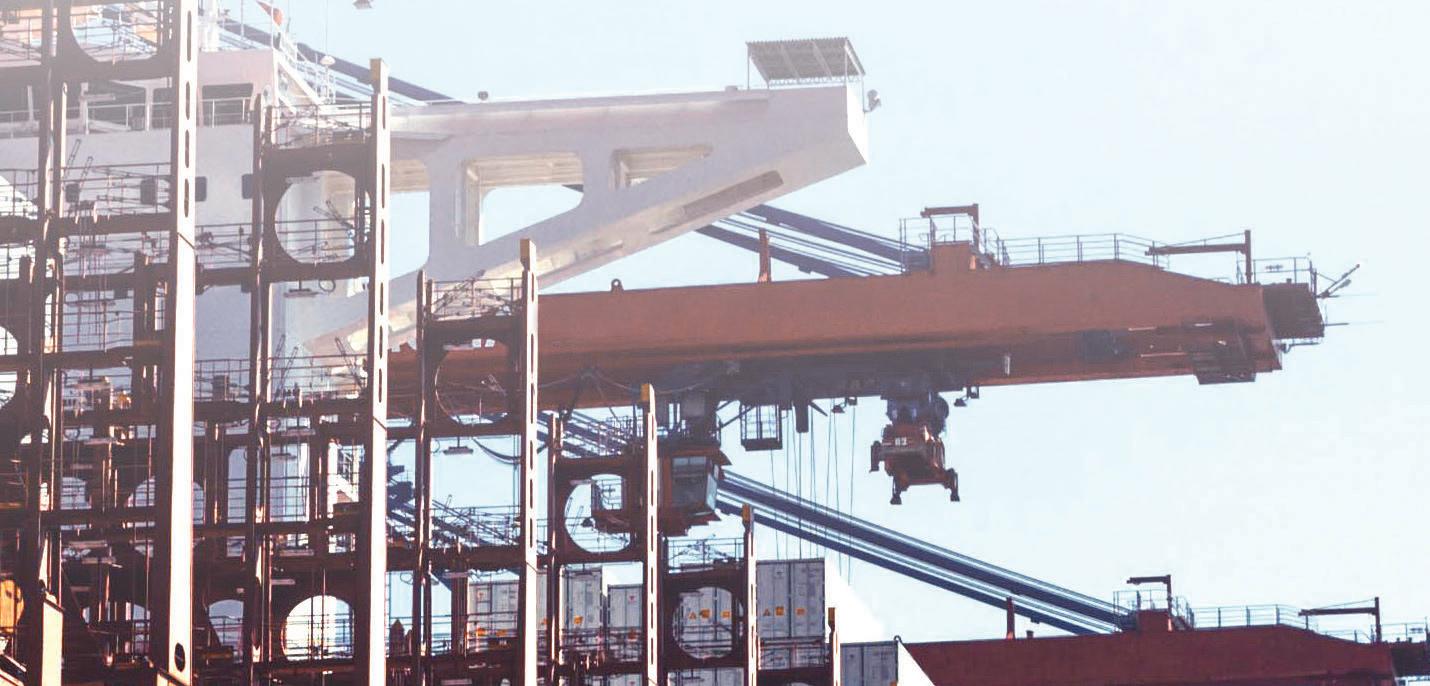



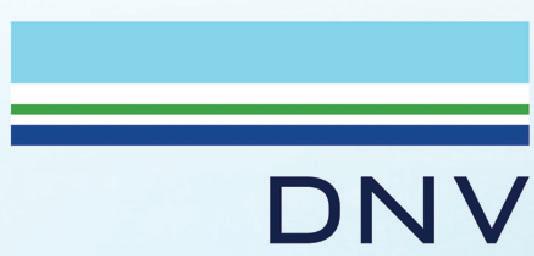






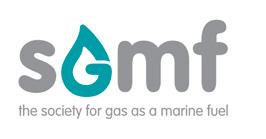


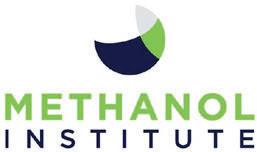








Antwerp-Bruge’s first alternative fuel tugs are nearing realisation with the launch of its methanol tug and its hydrogen tug arriving at the port.
The conversion of a Port of Antwerp-Bruges tug to methanol has been launched with the first engine installed in mid-November.
A second dual-fuel engine is set to be installed this week week enabling the vessel to run both on methanol and conventional fuels, according to the port authority.
The engine conversion was carried out by Anglo Belgian Corporation, which will also be in charge of installing the methanol tanks and pipes.
This project is funded by the European research and innovation program Horizon 2020 and it also includes Belgian engineering company Multi, which carried out the feasibility study for the project, Swedish shipbuilder Scandinaos, which designed the vessel’s modifications and Germany’s Heinzmann which is adapting the injectors.
Meanwhile, the port’s Hydrotug has arrived in the port of Ostend, where it will be further finished with the hydrogen system. Ostend was chosen because the tug can use the hydrogen bunkering facilities of CMB. TECH’s Hydrocat 48 there.
The Hydrotug consists of two BeHydro V12 dual fuel medium speed engines that can run on both hydrogen and traditional fuel. It can store 415kg of compressed hydrogen in six stillages installed on deck and
8 The goal is to have the Hydrotug fully operational in Antwerp in the first quarter of 2023

eliminates the emission’s equivalent of 350 cars.
Both tugs are part of an integrated greening programme for the Port of Antwerp-Bruges fleet and they are being deployed as an important step in the transition to a climate-neutral port by 2050.
The goal is to have the Hydrotug fully operational in Antwerp in the first quarter of 2023.
CMB.TECH has opened up its first dual fuel workshop to further scale up hydrogen truck conversions.
The shipping and logistics provider said that the first dual fuel trucks will be delivered to clients by March 2023 with the worshop able to convert 20 trucks a month thereafter.
“With the opening of the first dual fuel workshop, we can prove that the conversion process is a simple and scalable concept,” said Roy Campe, CTO of CMB.TECH.
”The transition can start today, even without full coverage of hydrogen infrastructure. We are setting the trend of being able to move away from traditional fuel in an affordable way. After a trial period, we can further roll out this concept to other locations and for other heavy-duty applications.”
In this workshop, Internal Combustion Engine (ICE) trucks
are converted with CMB.TECH’s dual fuel hydrogen technology.
In the first phase, CMB.TECH focuses on one type of truck, which enables standardisation. This can significantly reduce the price of the dual fuel conversion. This dual fuel technology can be applied to various brands and it is the first step towards the zero emissions target.
The dual fuel workshop is strategically located next to the CMB.TECH hydrogen refuelling station, allowing the converted trucks to undergo the initial refuelling with the necessary
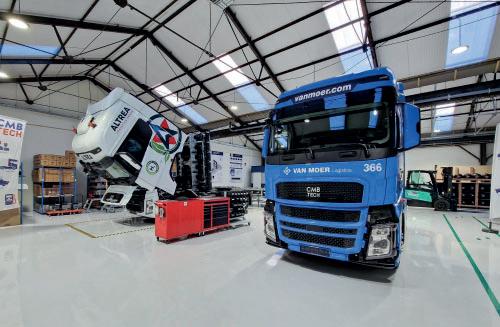
checks before being delivered to customers.
With this technology, hydrogen is released into the combustion chamber, requiring less diesel injection to power the engine. The conversion process starts with the mounting of the hydrogen tanks on the trucks and the installation of CMB.TECH’s injection ring on the engine. Next, the engine control unit is installed.
Besides the conversion process and certification, the dual fuel workshop is also responsible for the purchase and assembly of the hydrogen parts that are of strategic importance to achieve an affordable concept.
Both Van Moer Logistics, a leading logistics player in the port of Antwerp-Bruges and Haesaerts, member of ALTREA LOGISTICS group, a European pioneer in chemical tank transport, will receive the first CMB.TECH hydrogen trucks to add to their fleet.
PETRONAS, Eni and Euglena are studying the possibility of developing and operating a biorefinery in Southeast Asia to cater for multiple markets, including marine. To be located adjacent to PETRONAS’ existing integrated refinery and petrochemical facilities at Pengerang Integrated Complex (PIC), the complex is looking to cater for the rising demand for sustainable solutions worldwide.
Port of Aberdeen has been awarded GB£200,000 in UK Government funding to accelerate its drive to net zero which includes the progression to cleaner fuels. The funding for the ‘Port Zero’ feasibility study will analyse future port power demands, assess low carbon energy sources for equipment and quayside infrastructure and help develop a roadmap to decarbonise port operations.
IMO decarbonisation ambitions can only be achieved with alternative fuels, that’s according to The International Association of Dry Cargo Shipowners (Intercargo). The cargo organisation said that it continues to fully support the ambition to achieve net zero emission shipping by 2050, but that this goal can only be achieved by providing the shipping industry with alternative zero carbon fuels. “The responsibility for decarbonisation cannot be placed solely on the shoulders of the ship operator at the end of the line – it is a challenge that must be dealt with holistically by the entire shipping industry,” it said.
Ramboll Group A/S


Port and marine projects are often highly complex, and their planning and design requires a wide range of competences. Ramboll is a leading provider of independent consultancy services across the spectrum of port planning and design, marine structures and coastal engineering. 20 Harbour Drive, #02-01 117612 Singapore +65 6222 378 0

Specialist for pneumatic ship unloaders and mechanical ship loader. NEUERO follows the MADE IN GERMANY quality tradition. Now with more than100 years of tradition in the manufacture of reliable and high-quality conveyor systems worldwide.
Email: neuero@neuero.de Tel: +49 5422 9 50 30 neuero.de/en/
As one of the leading manufacturers of quick connector systems, Stäubli covers connection needs for all types of fluids, gases and electrical power.
+41 61 306 55 55 ec-ch@staubli.com www.staubli.com/en-ch/ connectors/

Grabs of MRS Greifer are in use all over the world. They are working reliably and extremely solid. All our grabs will be made customized. Besides the production of rope operated mechanical grabs, motor grabs and hydraulic grabs we supply an excellent after sales service.
Talweg 15-17, Helmstadt-Bargen 74921, Germany Tel: +49 (0)7263 - 91 29 0 Fax: +49 (0)7263 - 91 29 12 info@mrs-greifer.de www.mrs-greifer.de

Founded in 1932, Künz is now the market leader in intermodal rail-mounted gantry cranes in Europe and North America, offering innovative and efficient solutions for container handling in intermodal operation and automated stacking cranes for port and railyard operations.
Gerbestr. 15, 6971 Hard, Austria T: +43 5574 6883 0 sales@kuenz.com www.kuenz.com
ELME Spreader, world’s leading independent spreader manufacturer supports companies worldwide with container handling solutions that makes work easier and more profitable. Over 21,000 spreaders have been attached to lift trucks, reach stackers, straddle carriers and cranes.

Stalgatan 6 , PO Box 174 SE 343 22, Almhult, Sweden Tel: +46 47655800 Fax: +46 476 55899 sales@elme.com www.elme.com
Taylor Machine Works, Inc. Taylor Machine Works designs, engineers, and manufactures more than 100 models of industrial lift equipment with lift capacities from ,000-lbs. to 125,000-lbs.


YOU CAN DEPEND ON BIG RED! 3690 N Church Avenue Louisville, MS 39339 USA +1 662 773 3421 www.taylorbigred.com
Cruise Lines International Association Australasia Cruise Lines International Association (CLIA) is the world’s largest cruise association and is dedicated to the promotion and growth of the cruise industry. CLIA is composed of more than 60 of the world’s major cruise lines.

Suite 1 Level 9 132 Arthur Street North Sydney NSW 2060 Australia
Royal Haskoning DHV
Royal HaskoningDHV is an independent consultancy which integrates 140 years of engineering expertise with digital technologies and software solutions, specialising in the planning and design of marine facilities, ports, terminals and shipyards. Level 3, 2 Market Street Newcastle, NSW 2300 Australia +61 2 4926 9500

WABTEC Stemmann-Technik offers innovative electrification systems for ports and vessels. We are contributing to the emissions reduction of air pollutants, noise, vibration.
Among our broad portfolio you can find ShoreCONNECT® marketleading solutions for Onshore Power Supply. FerryCHARGER® High Power Charging interface for battery electric vessels, with available Medium Voltage option.
stemmann-sales@wabtec.com stemmann.com
The world specialist in Power and Data Transfer Systems, Mobile Electrification, and Crane Electrification Solutions. We Keep Your Vital Business Moving!
Rheinstrasse 27 + 33 Weil am Rhein 79576 Germany Tel: +49 (0) 7621 662 0 Fax: +49 (0) 7621 662 144 info.de@conductix.com www.conductix.com
Hammar Maskin AB
Hammar Maskin AB is developing, manufacturing and marketing Sideloaders, also known as Sidelifters, Swinglifters or Self loading trailers, under the brand name HAMMAR™.
Buagärde 36, Olsfors 517 95 Sweden Tel: +46-33 29 00 00 Fax: +46-33 29 00 01 info@hammar.eu www.hammar.eu
Svitzer

Since 1833, we have been delivering safe, reliable and cost efficient towage and marine solution services where needed. At Svitzer, we put safety first and our customers at the heart of everything we do. Solving needs and pain points for customer, ports and marine communities is our core passion.
Level 1, 7 Cooper Street Balmain 2041, Australia +61 2 4926 9500

Siemens AG (Berlin and Munich) is a global technology powerhouse that has stood for engineering excellence, innovation, quality, reliability and internationality for more than 170 years. The company is active around the globe, focusing on the areas of electrification, automation and digitalization.
Mozartstr. 31C, 91052 Erlangen, Germany +49 180 524 70 00 support.energy@siemens.com www.siemens.com/siharbor

“Strong Partners Tough Trucks”Hyster is the leading global supplier of materials handling equipment, from 1t warehouse trucks to 52t container handlers. With a network of independent, experienced dealers providing sales & service support worldwide, Hyster delivers tailored, innovative, cost-effective solutions for a vast range of demanding applications.
https://www.hyster.com/


